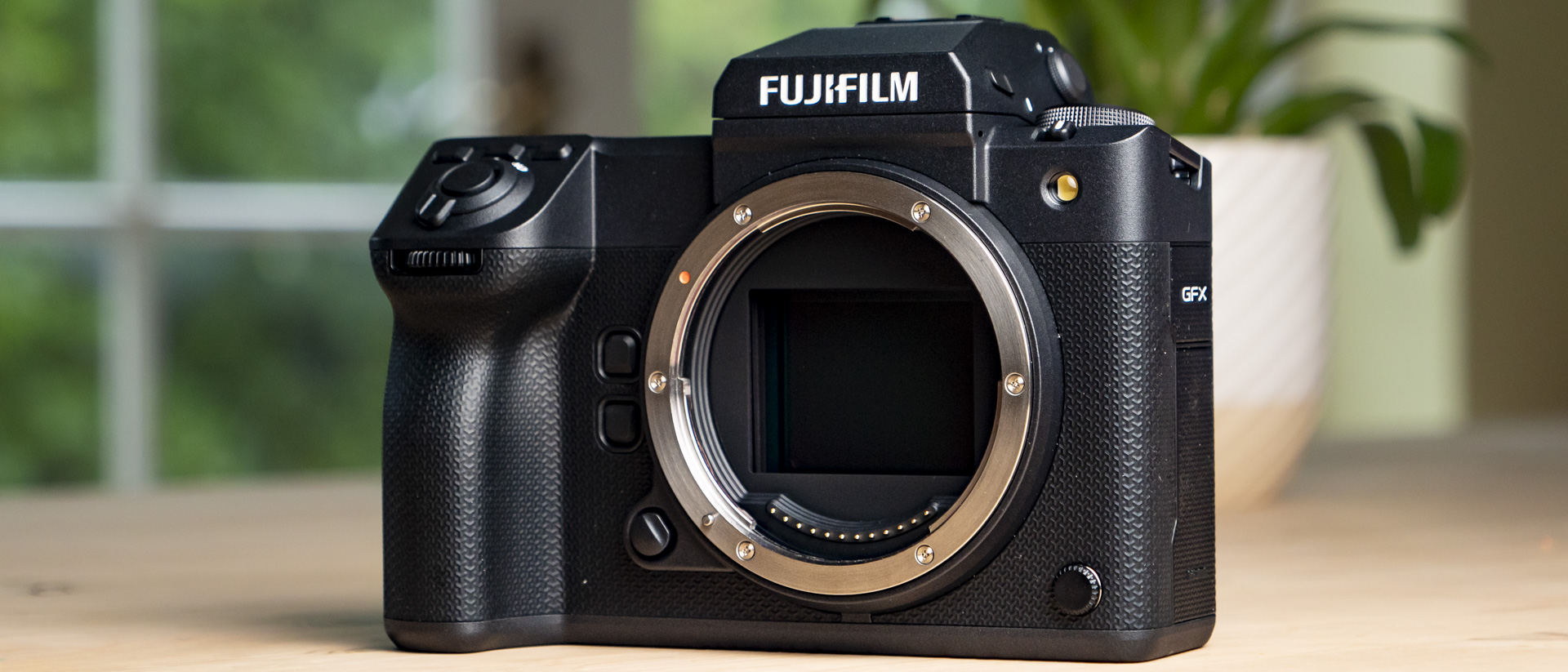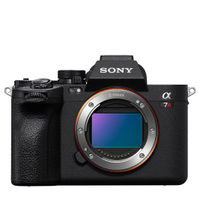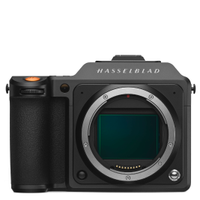TechRadar Verdict
The Fujifilm GFX100 II is the best medium-format camera for most people if you can afford it. I still prefer the simpler user-experience and design of the Hasselblad X2D 100C for photography, but the GFX100 II is the most powerful camera in this sensor format available and blows away the competition in almost every other regard, including Fujifilm’s own GFX models. Finally, you don’t need to compromise between ultra-high resolution images or speedy performance; the GFX100 II does both, for photo and video. This is medium-format breaking new ground.
Pros
- +
Speediest medium-format camera available
- +
Superb image and video quality
- +
Large and clear viewfinder display
Cons
- -
Not all GF lenses can match the autofocus speed
- -
Larger and heavier than a full-frame camera
- -
Ultra-capable video spec, photo-centric design
Why you can trust TechRadar
Think medium-format is slow? Think again. The Fujifilm GFX100 II breaks new ground and is the most powerful, responsive, and versatile medium-format mirrorless camera available.
Rattling off gigantic 102MP photos in raw format, at a rate of 8fps with reliable subject detection autofocus that includes human eye AF is no mean feat. This is power and quality, and one of the best professional cameras available.
No longer do you have to choose between image quality and speed – the GFX100 II goes some way to offer both, being quicker than any other GFX camera, and matching the kind of speed we’d expect from enthusiast full-frame cameras like the Sony A7R V and Fujifilm X-T5, while offering industry-leading image quality with its 102MP sensor.
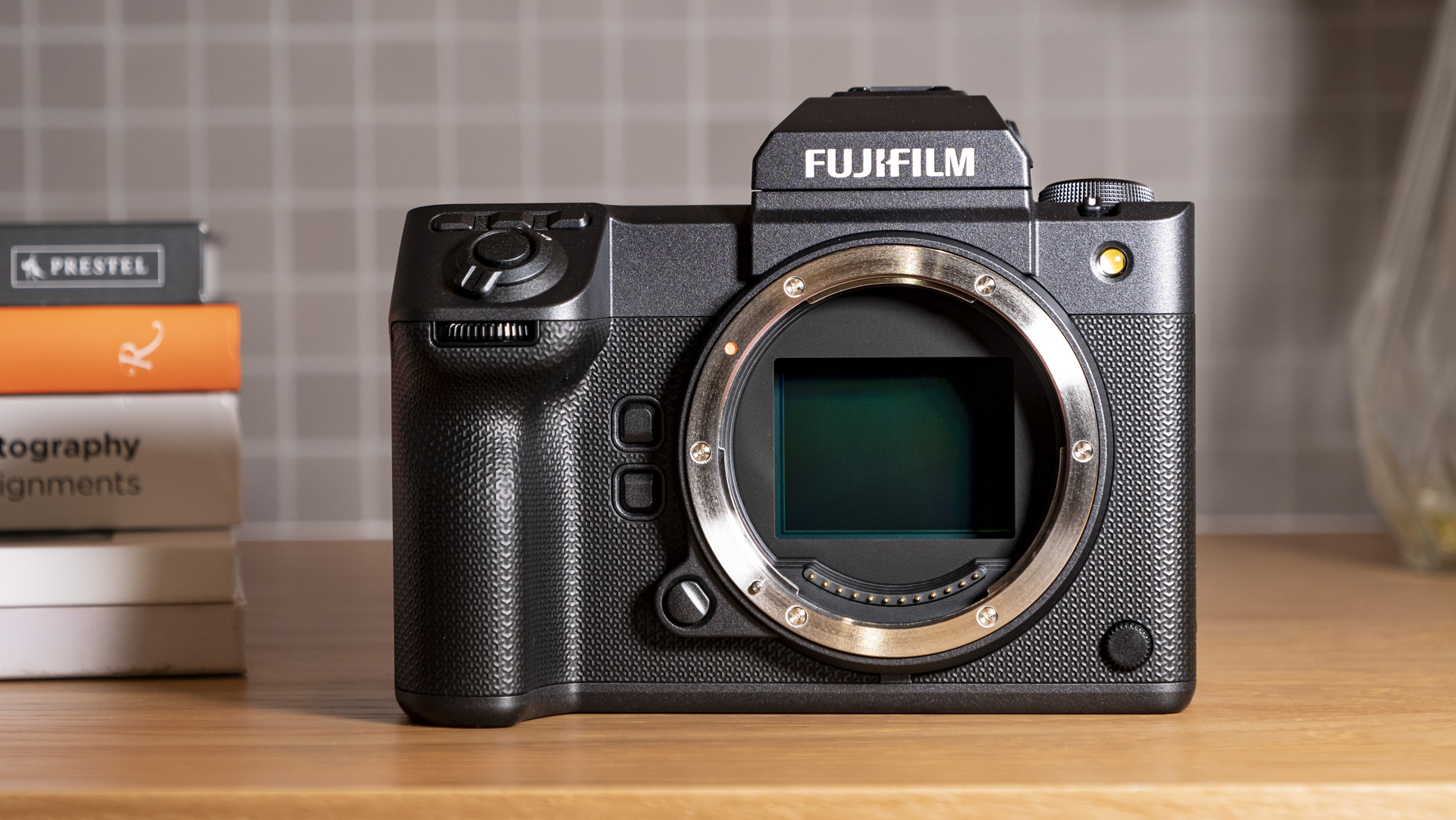
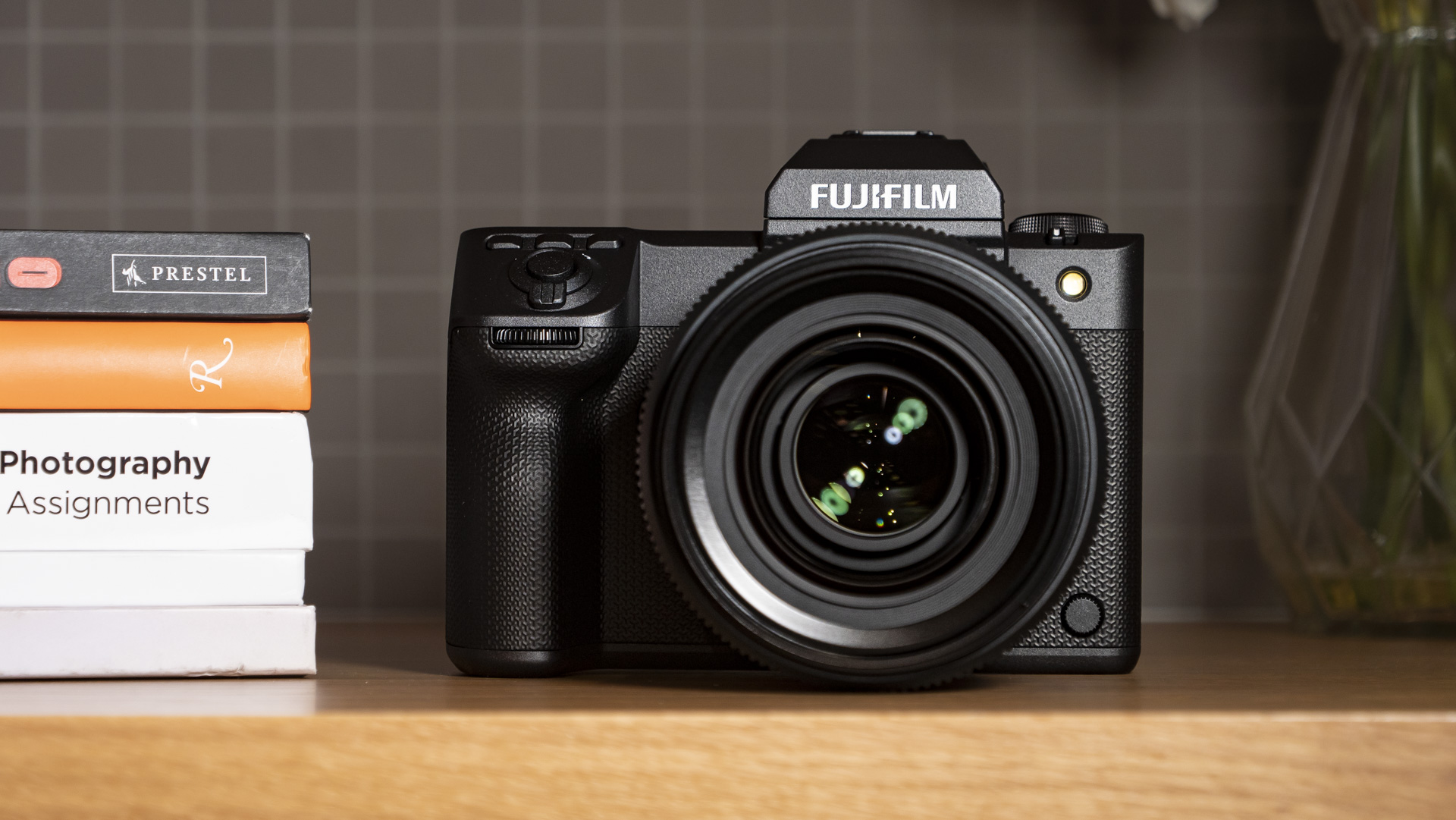
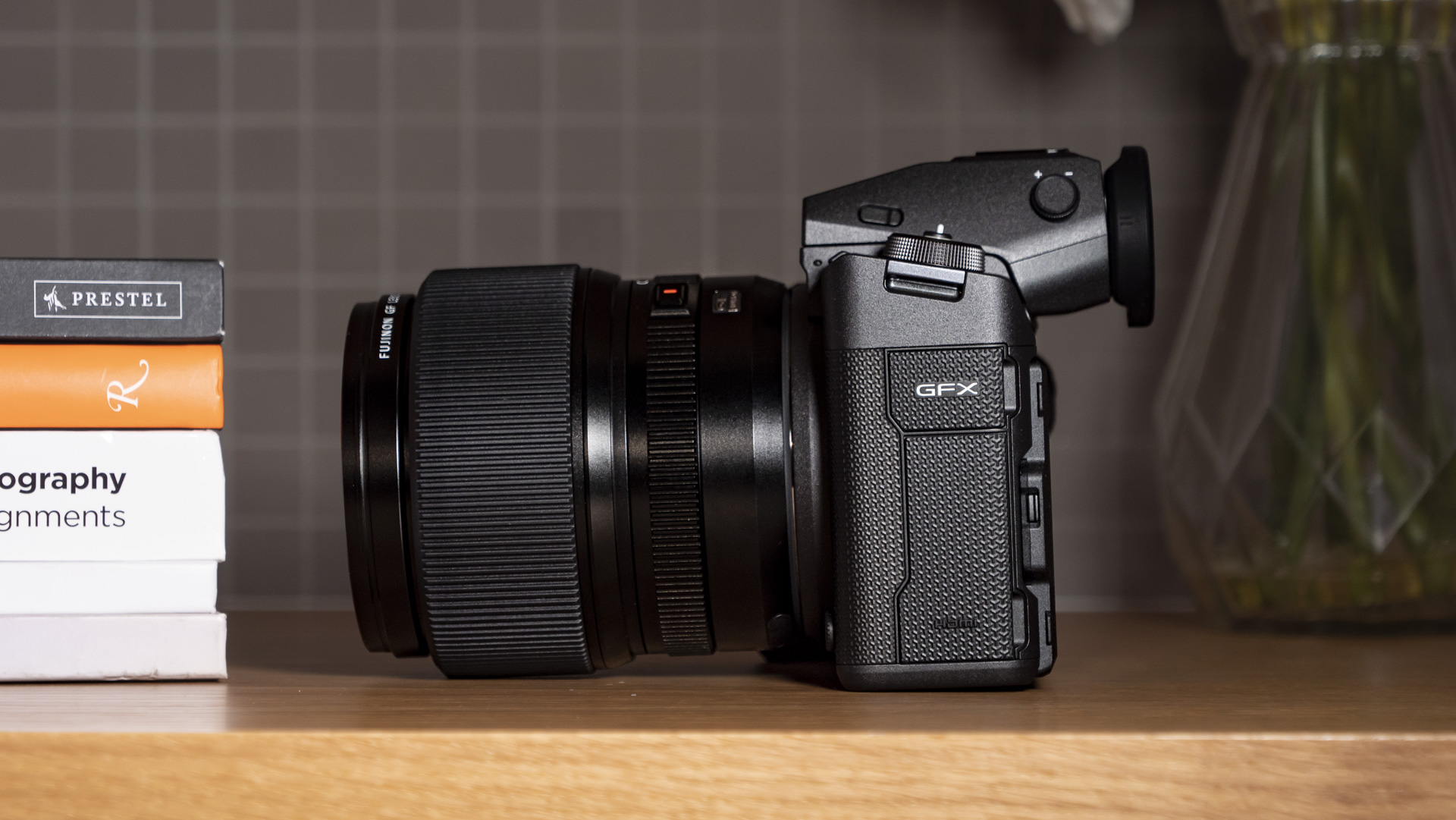
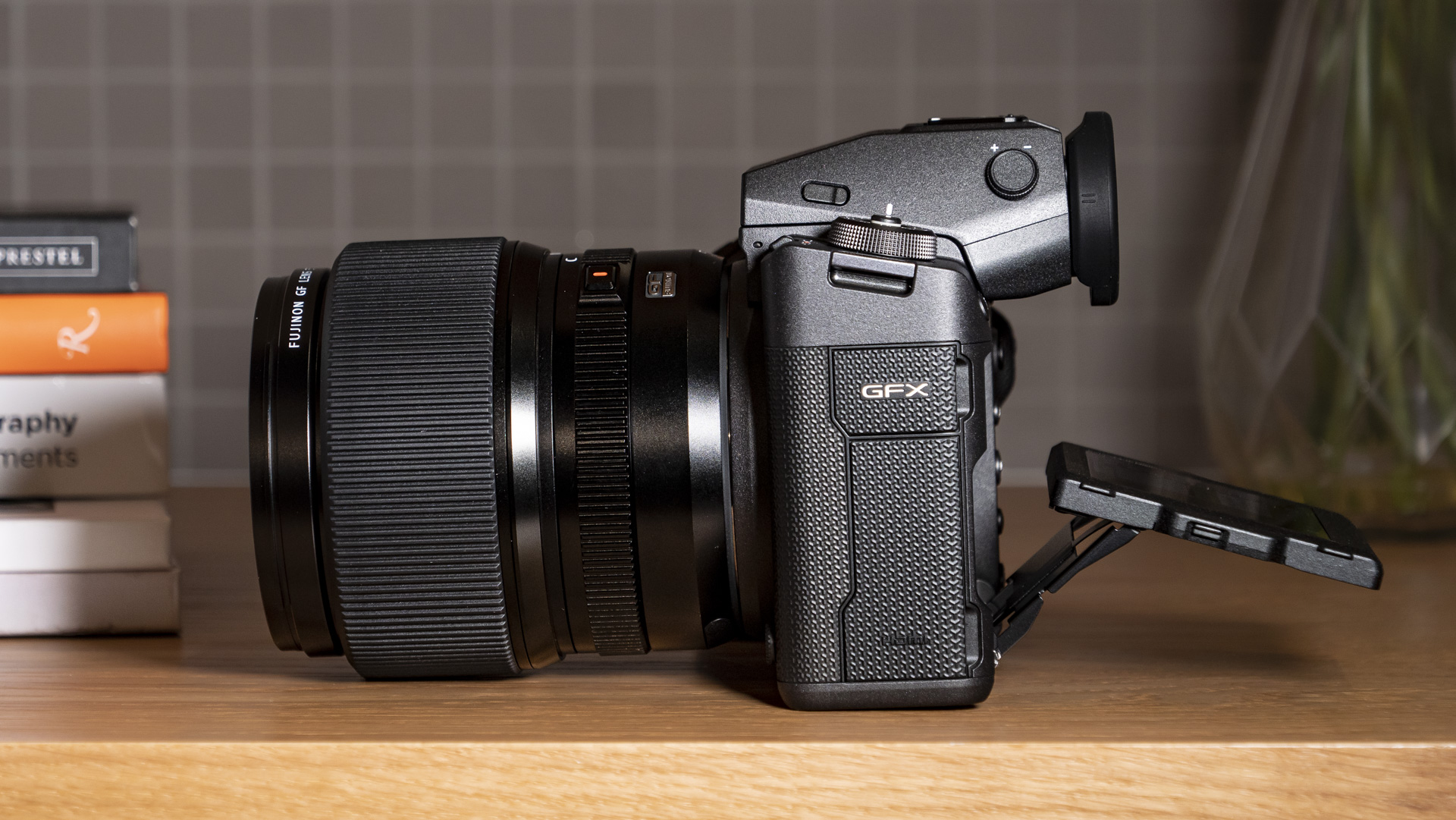
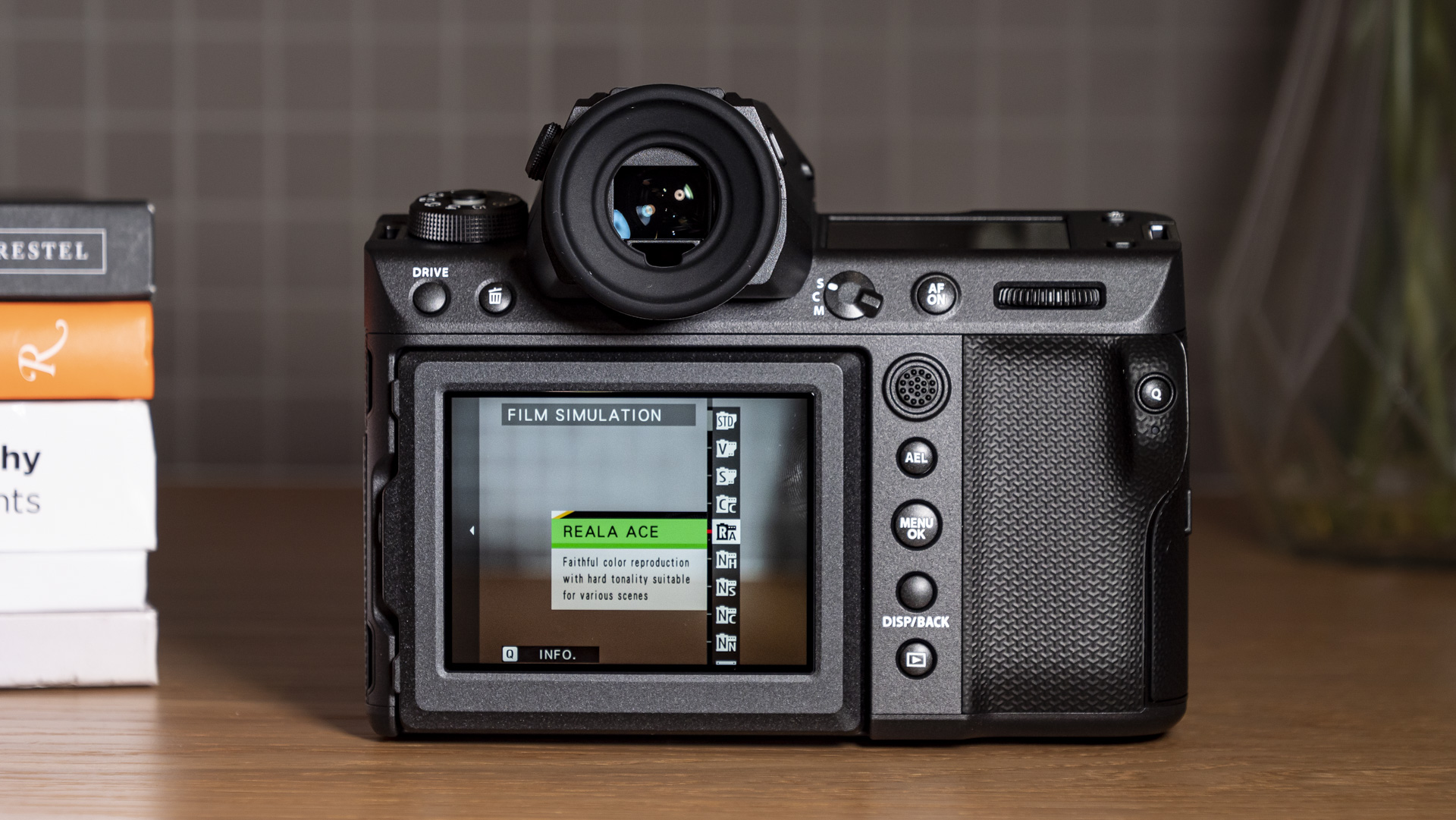
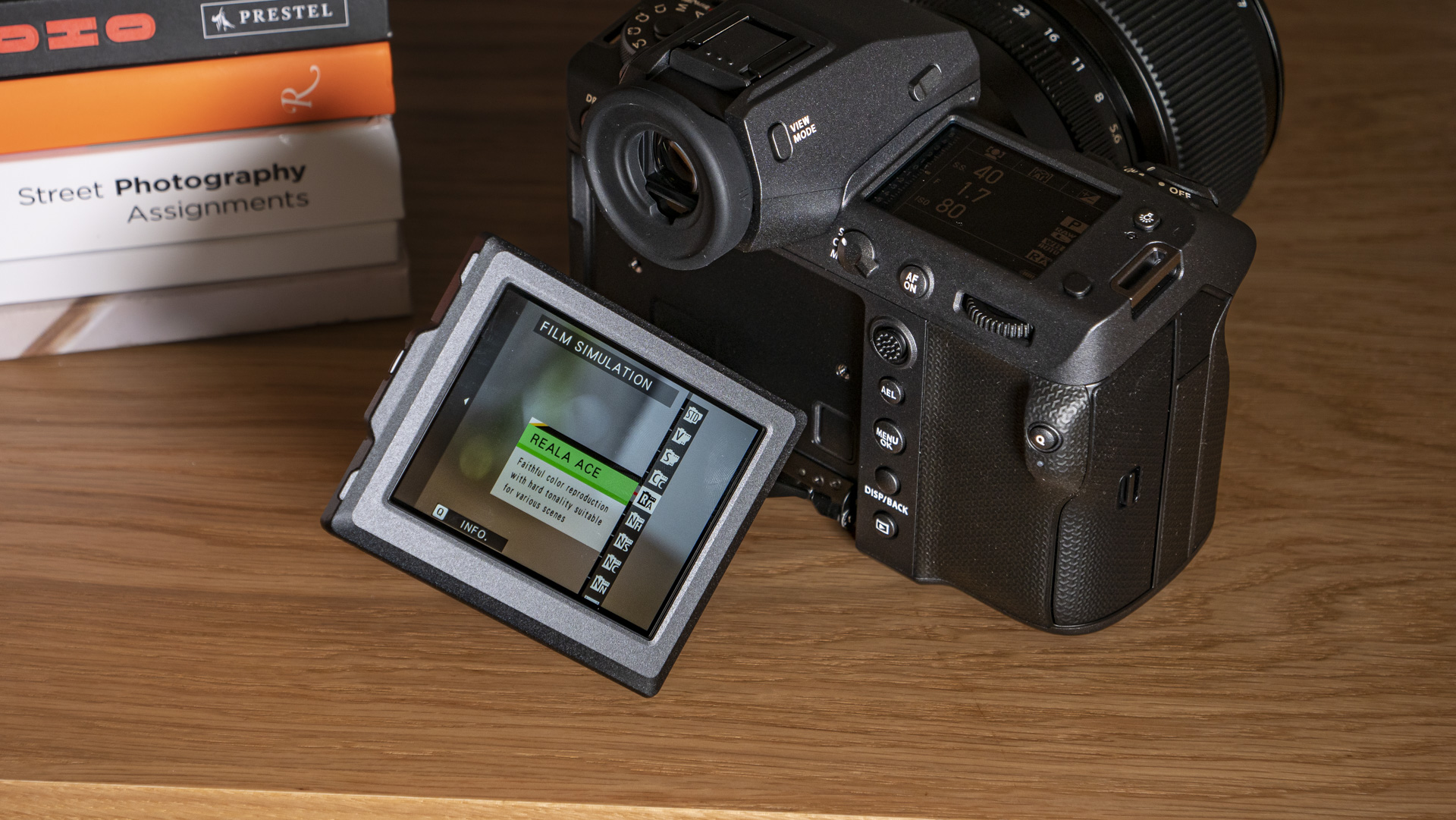
For the first time, I can easily see the sensor format being genuinely usable for a wider range of subjects and everyday photography, breaking free from the controlled and static scenarios like studio, portrait, and landscape photography that medium-format is usually limited to.
The GFX100 II is also a highly-capable video camera, with 8K / 30p video and ProRes raw recording, luts color profiles, a multi-aspect ratio that also includes anamorphic, compatibility with an external SSD, and a cooling fan to extend record times.
A new body design from Fujifilm also hits the mark. It’s not retro like many of Fujifilm’s offerings, nor is it plain like other GFX cameras. It’s modern, brutalist, and has completely grown on me. I don’t like the handling for photography as much as the Hasselblad X2D 100C, but this is a hybrid camera and the Hasselblad doesn’t shoot video at all.
Whether you shoot photo or video, the image quality of the GFX100 II is the crème de la crème, if you can afford it, and the most powerful Fujifilm camera to date.
Fujifilm GFX100 II: Release date and price
- Body only list price is $7,499 / £6,999 / AU$12,599
- Optional VG-GFX II grip costs $499 / £479 / AU$899
The GFX100 II is available for pre-order, with a list price of $7,499 / £6,999 / AU$12,599, and the optional VG-GFX II grip costs $499 / £479 / AU$899. That’s somewhere between the launch prices of the GFX100 and GFX100S, around what we would expect given the camera’s features, and immediately the most sensible GFX camera for most people.
The same ‘Fan-001’ made for the Fujifilm X-H2S, X-H2 and X-S20 helps increase high-resolution video record times is also compatible with the GFX100 II, and costs $199 / £169 / AU$369.
Alongside the GFX100 II, Fujifilm announced a medium-format GF lens with autofocus motors that match the autofocus potential of the camera; the GF 55mm F1.7 R WR priced at $2,299 / £2,249 / AU$3,899.
- Price score: 4/5
Features and performance
- Continuous 8fps for more than 1,000 JPEGs
- X Processor 5 for fastest GFX performance yet
- 8-stops in-body image stabilization
An improved version of Fujifilm's existing 102MP sensor is paired with the latest X Processor 5 engine to deliver the fastest performance in a GFX camera to date/ This includes the kind of autofocus speed we've come to expect from the Fujifilm X-T5 for detecting human and animal subjects, only with improved accuracy.
I put the eye detection AF to the test – the camera detects and locks onto subjects very quickly as indicated on the screen, but does that visual confirmation result in sharp focus where it really counts? The answer is yes, the majority of the time; incrementally better than Fujifilm’s previous efforts but not quite up there with the very best autofocus systems.
For static human portraits, about 80% of the photos I took were sharp on the eyes, and introducing slow movement dropped that hit ratio by about 10-20%. However, the GFX100 II is the fastest medium-format camera ever, and when using the continuous high burst mode you’ll get more sharp shots in moderate action sequences than ever before in the sensor format.
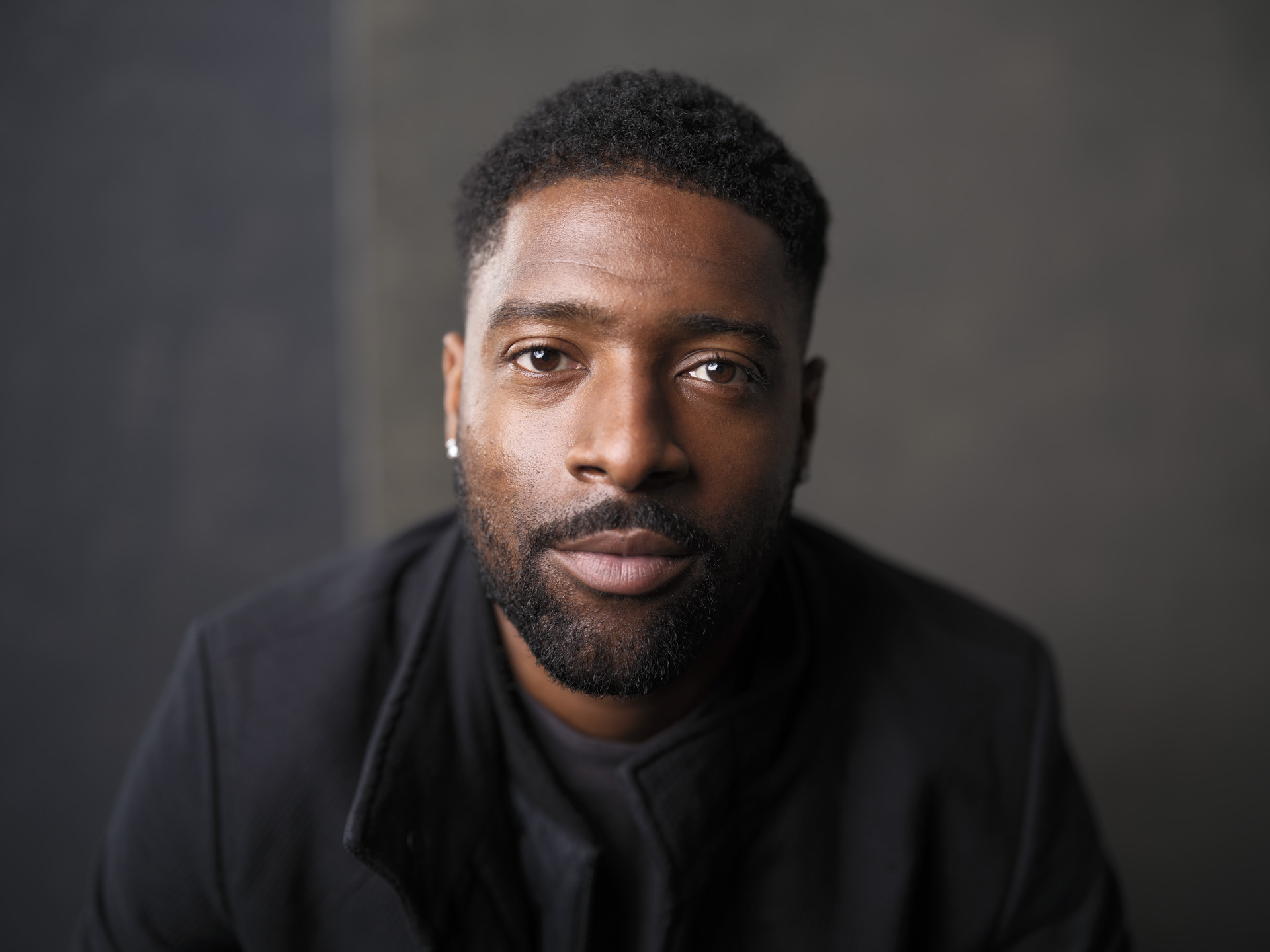
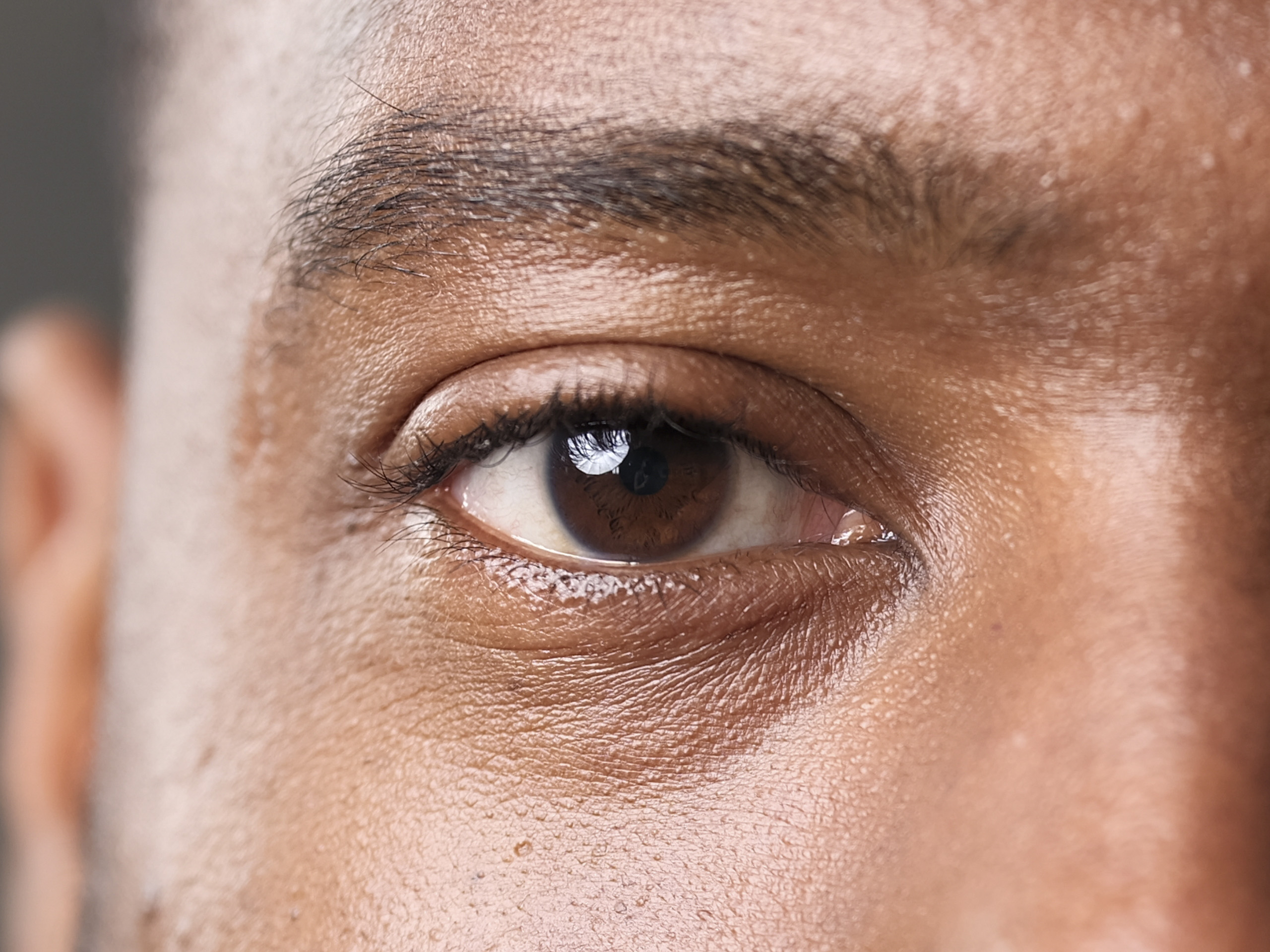
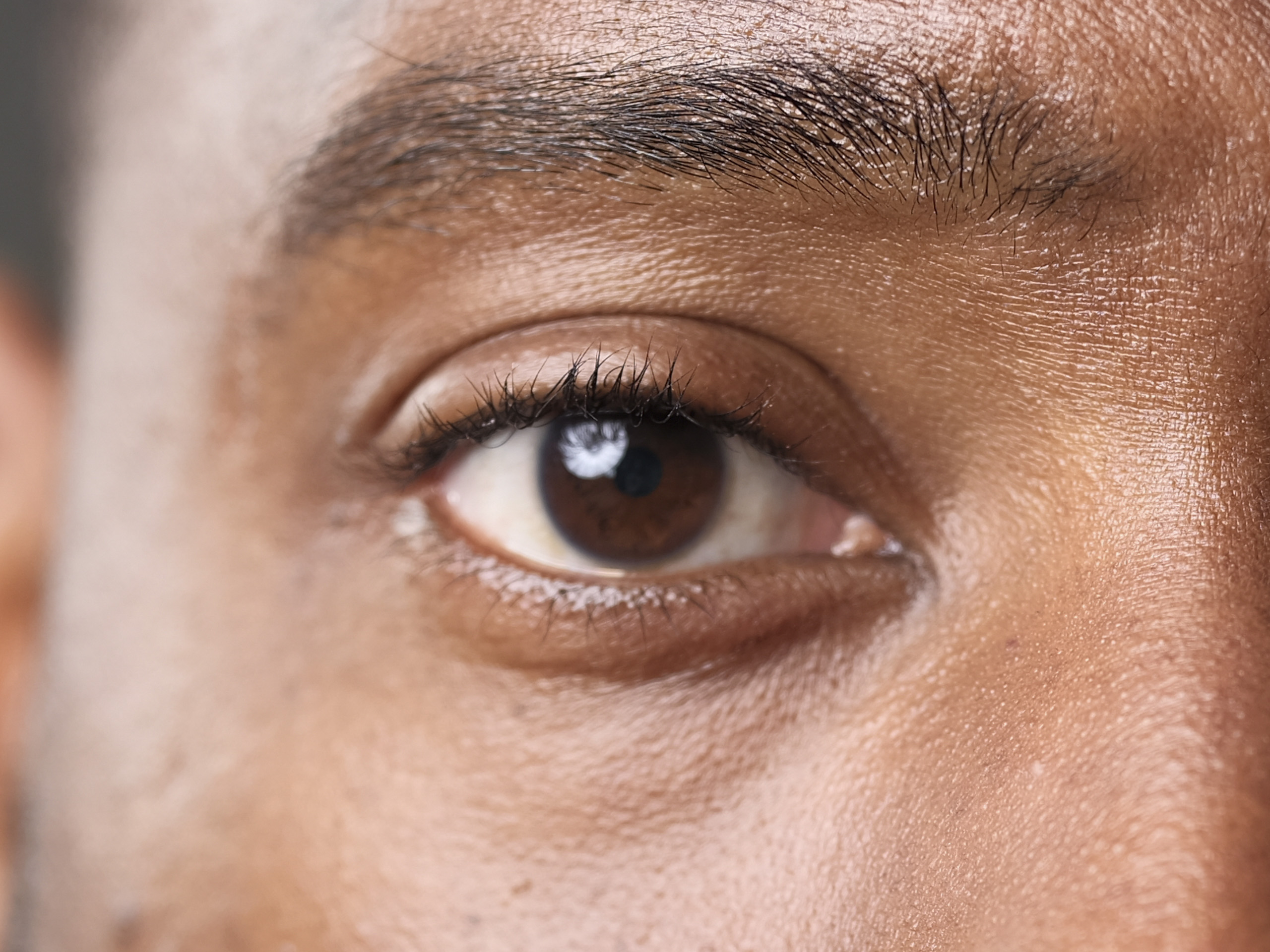
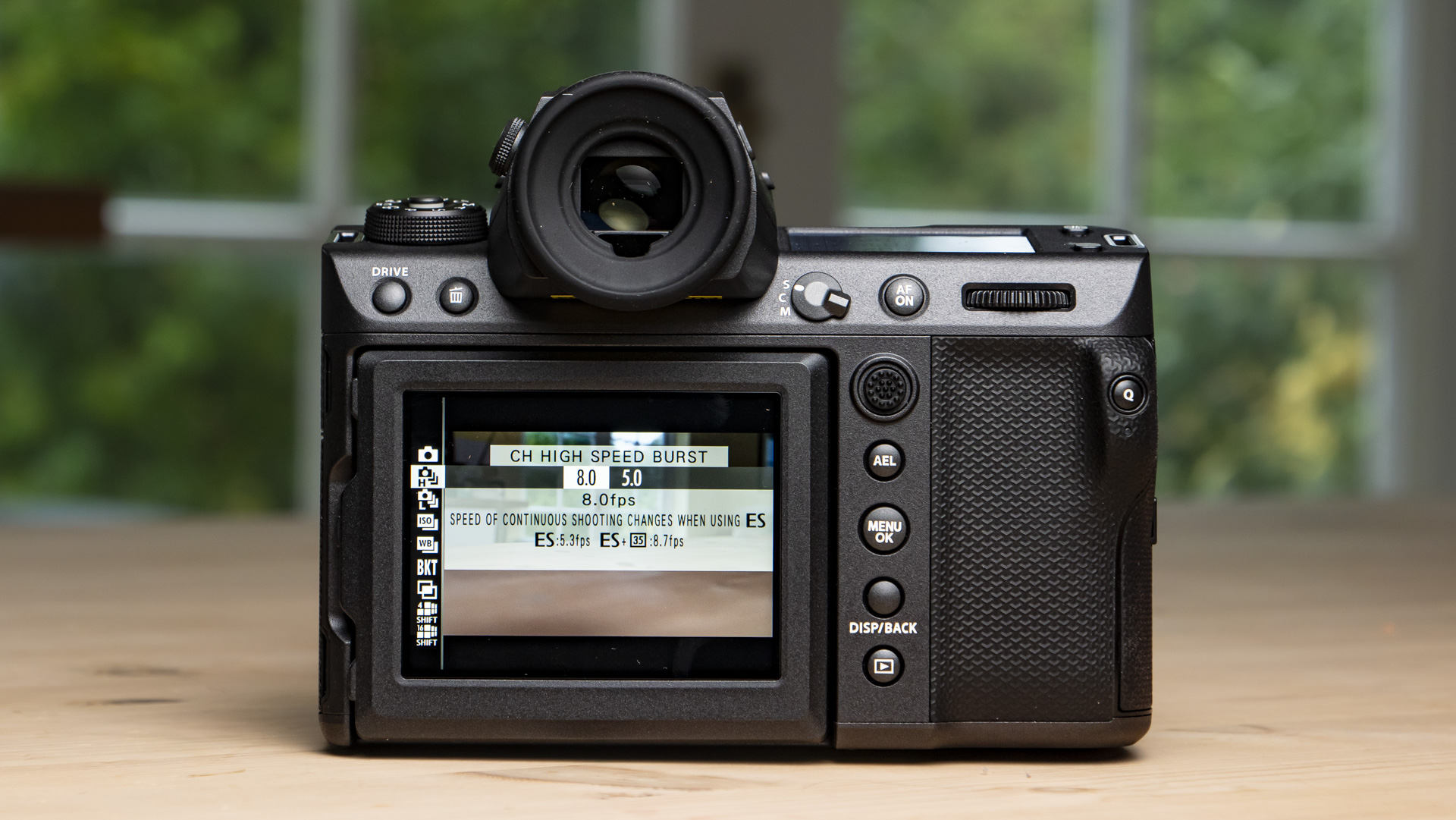
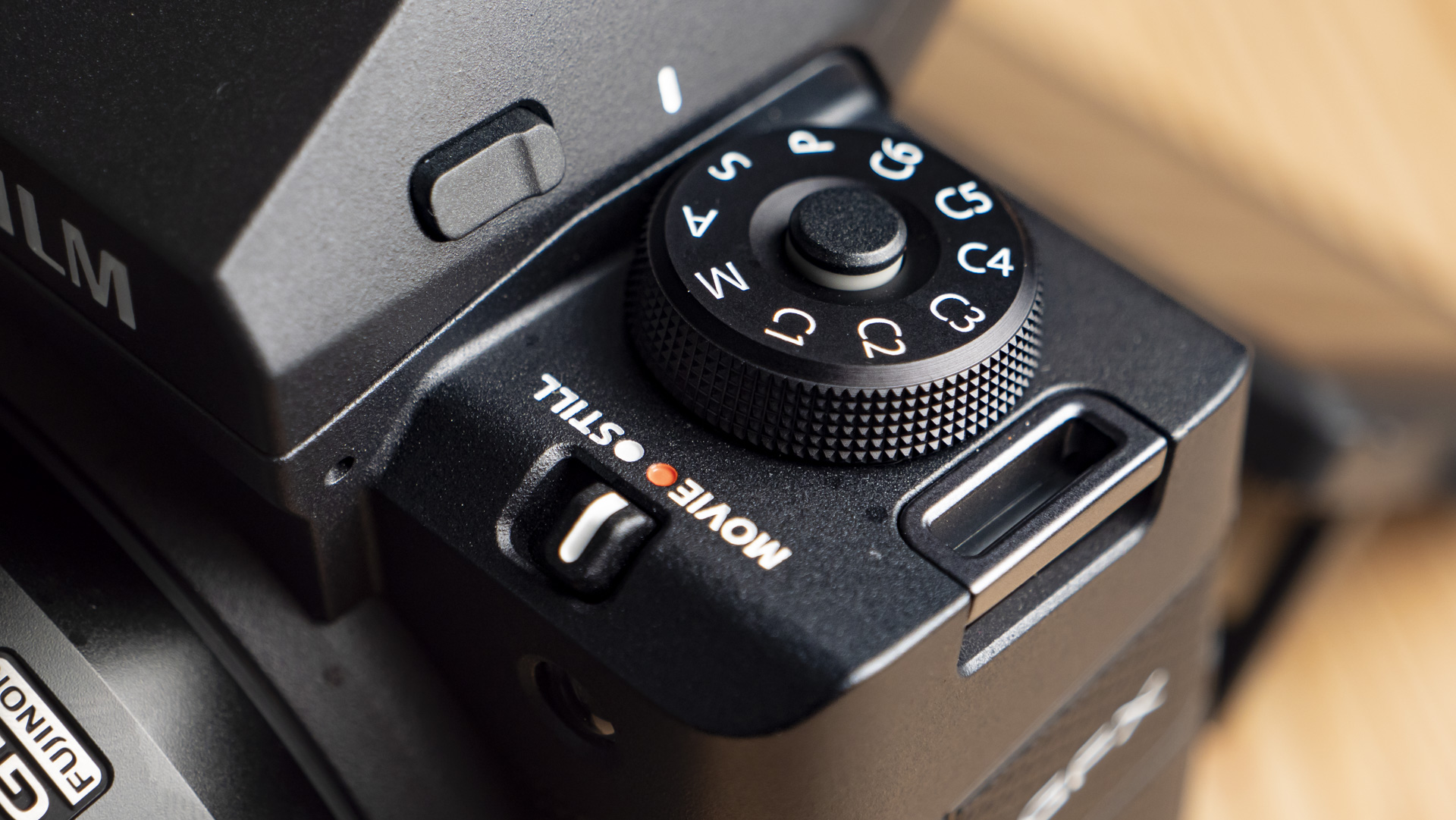
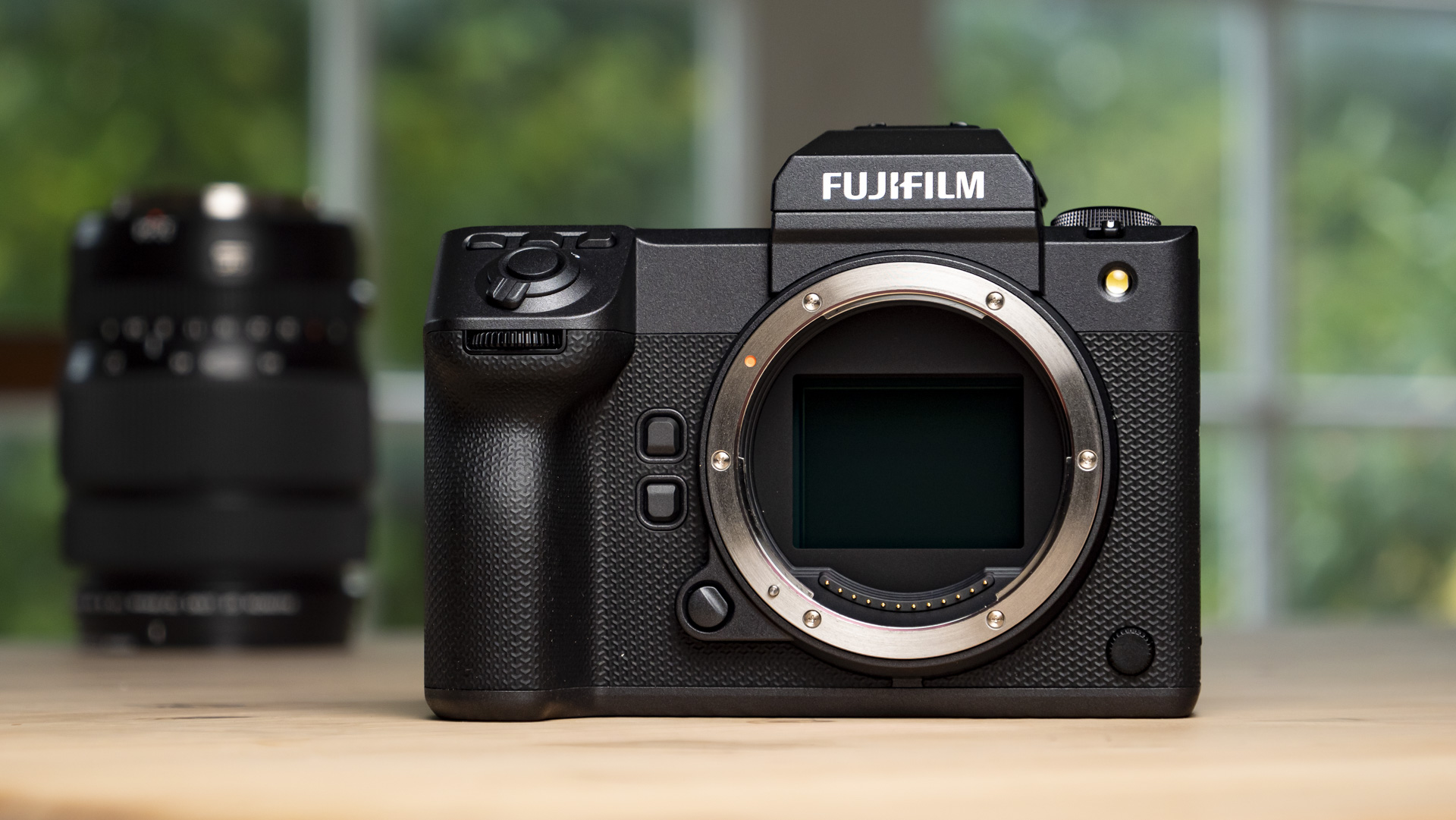
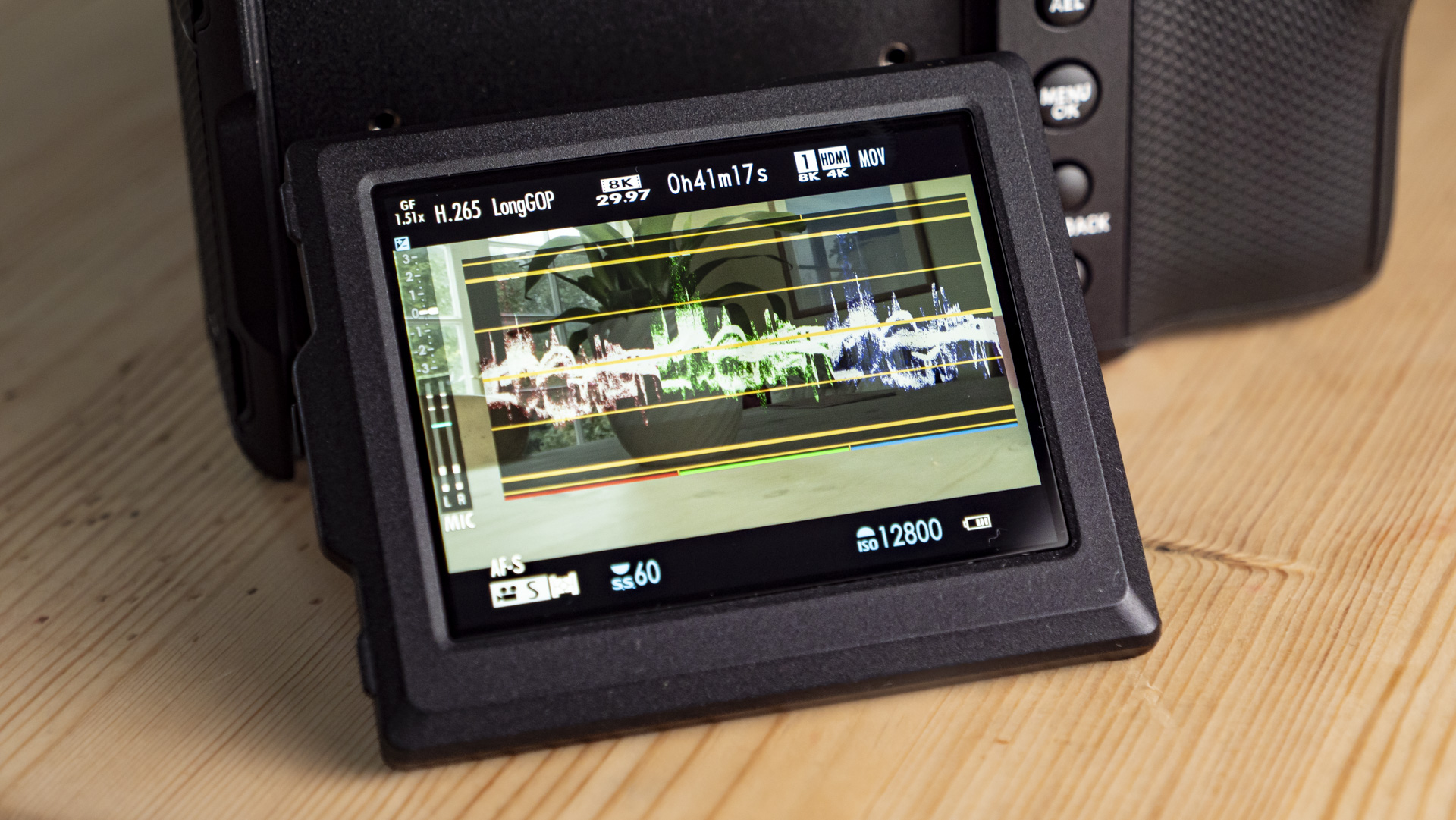
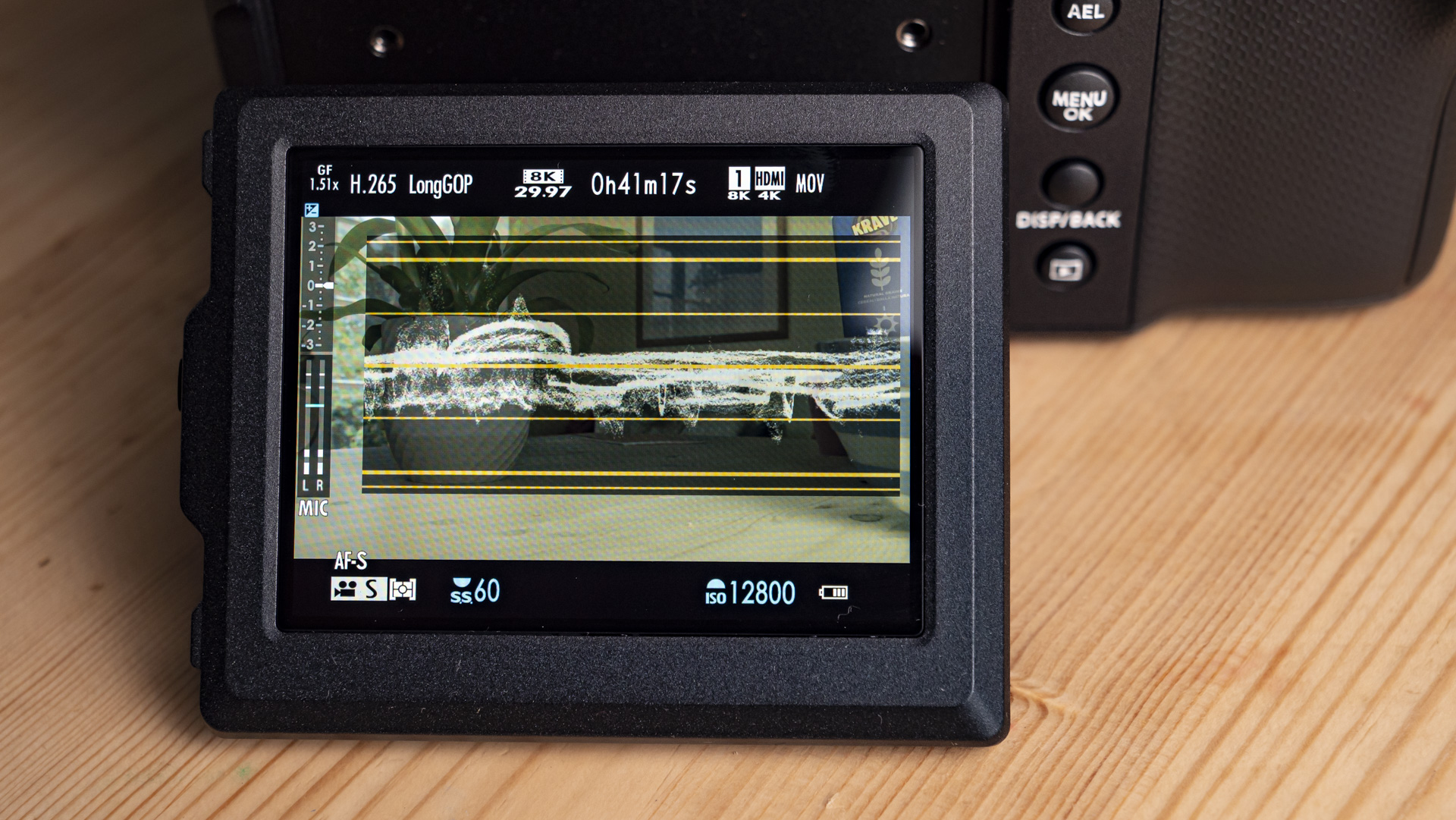
For high-speed burst shooting, the GFX100 II’s maximum 8fps speed – previously unheard of for medium-format – with continuous AF keeps going for what is essentially an unlimited number of JPEG photos, when recording onto a CFExpress card, or around 75 images in raw format. That number of JPEGs is significantly reduced to a little under 200 images on an SD card.
In fact, using an SD card is practically a waste of time – I even found 102MP image playback was freezing if the images were saved on my SD card. You really want CFExpress media or an external SSD to get the most out of the GFX100 II.
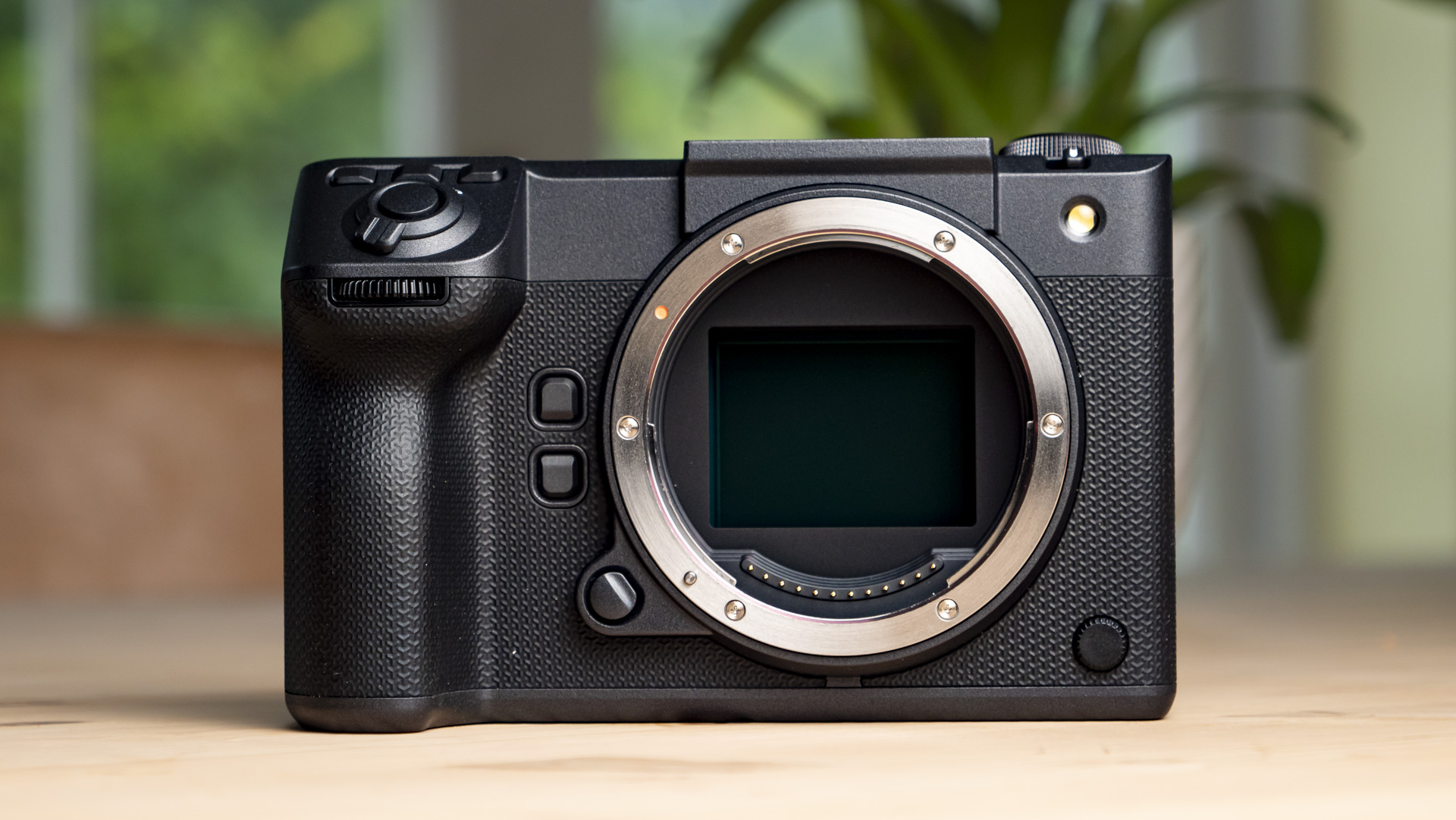
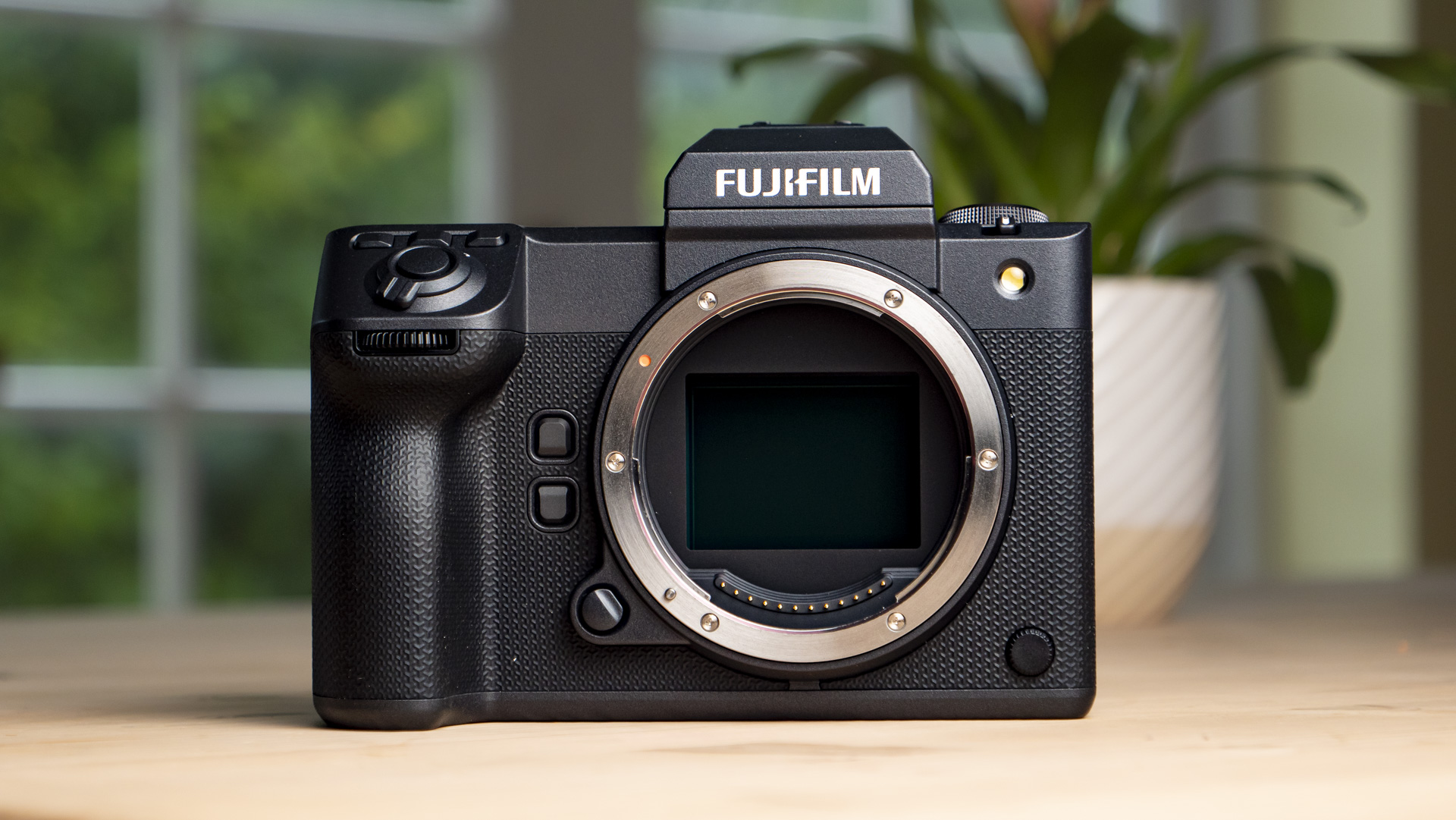
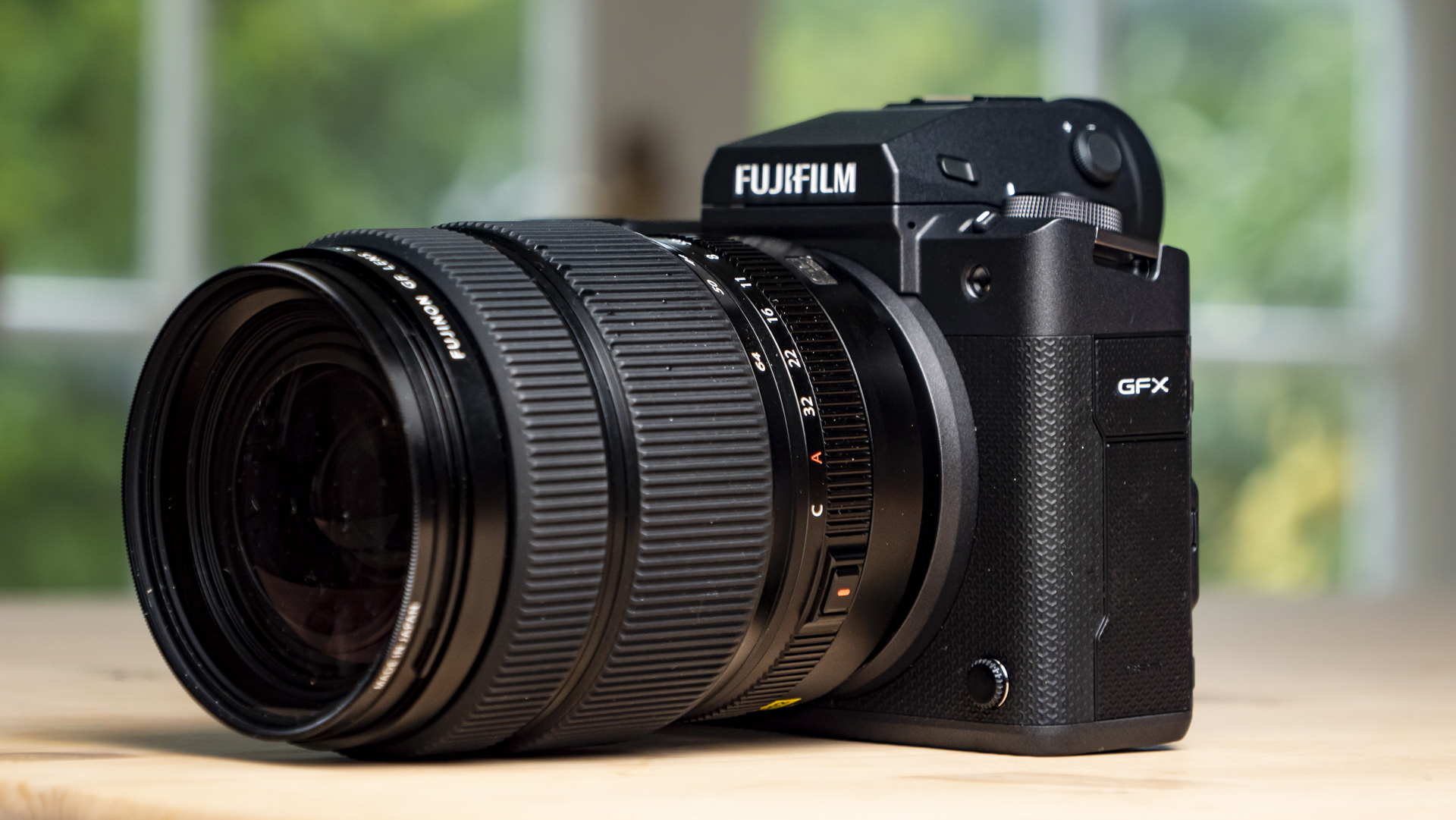
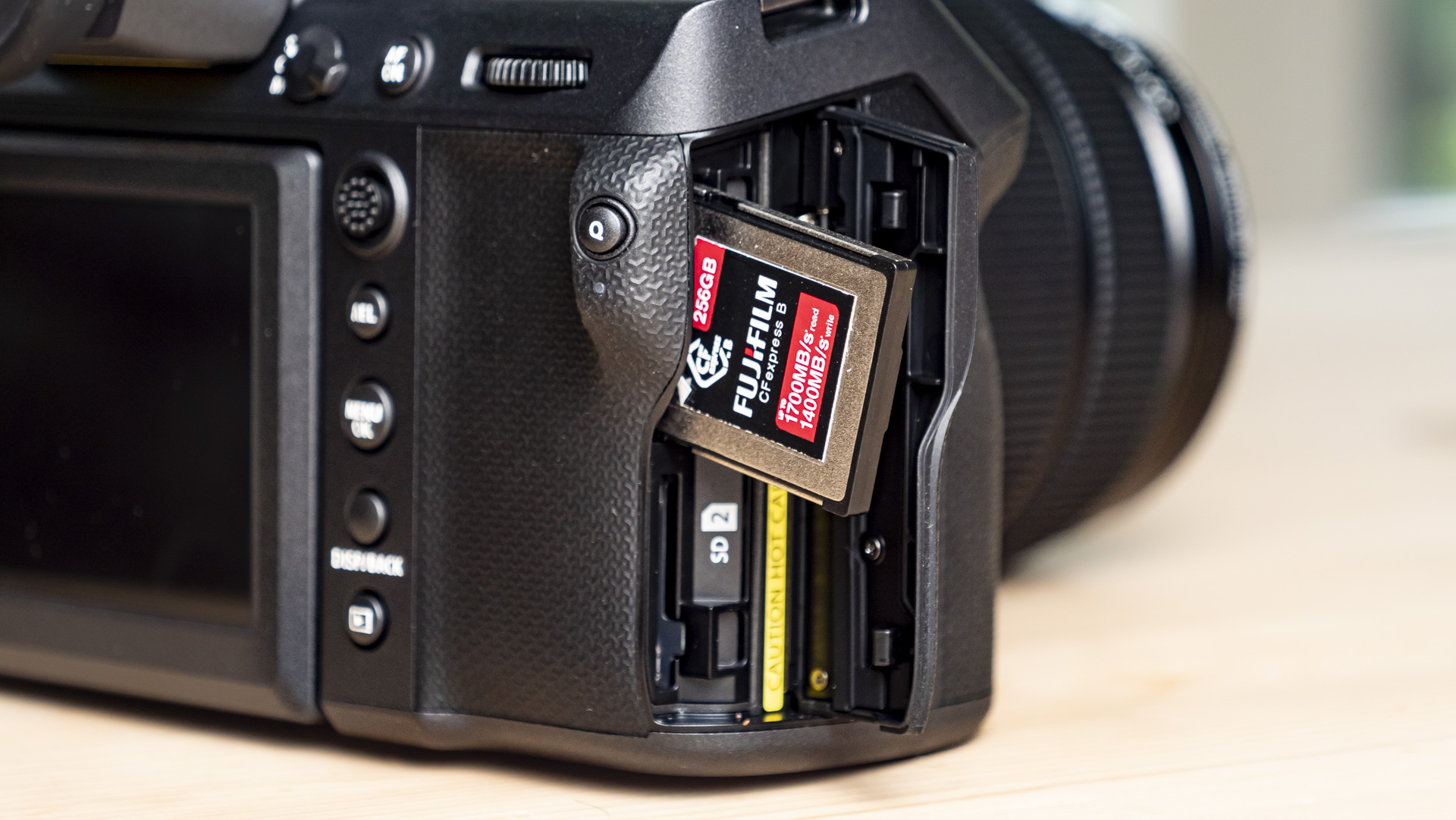
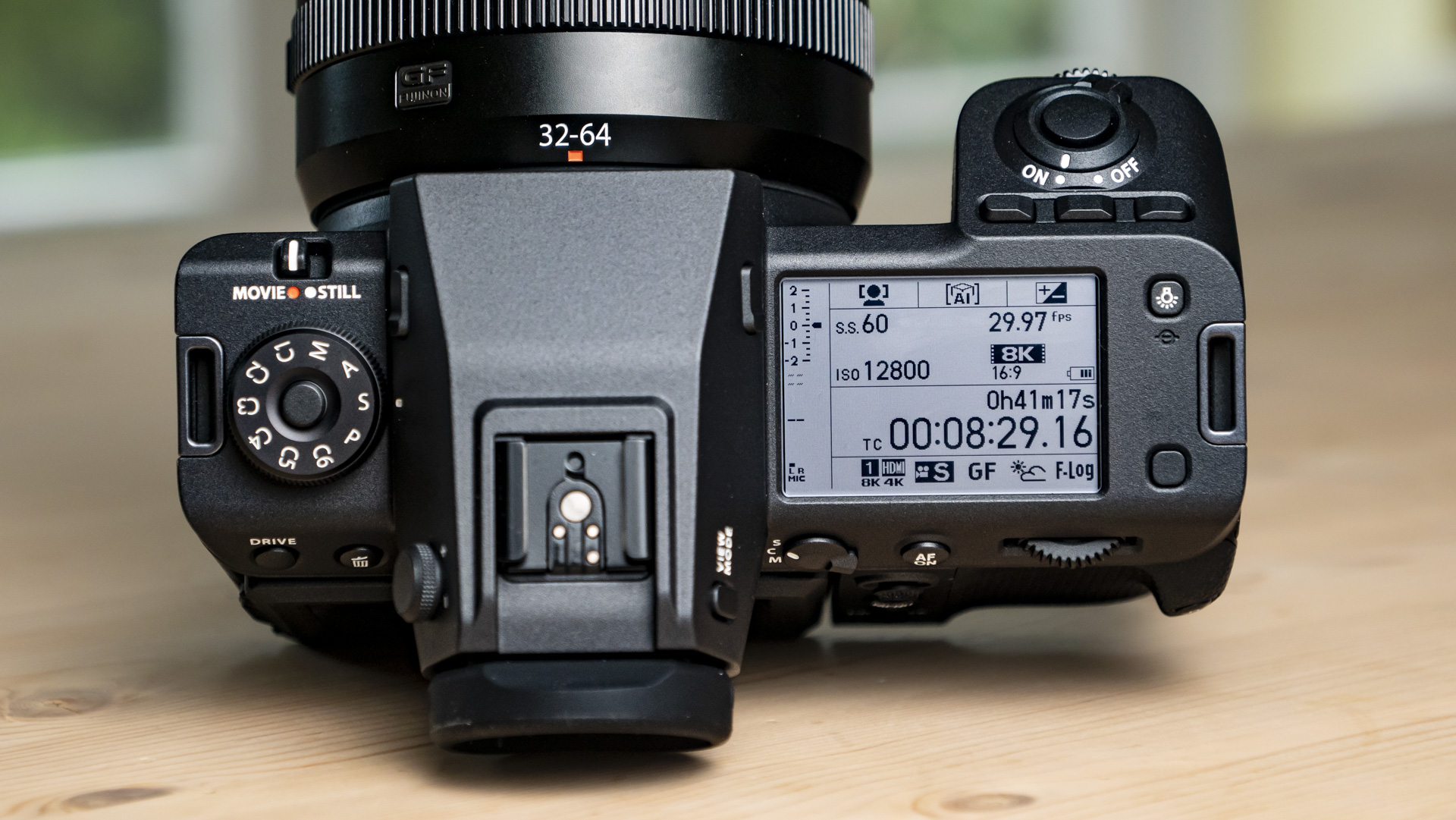
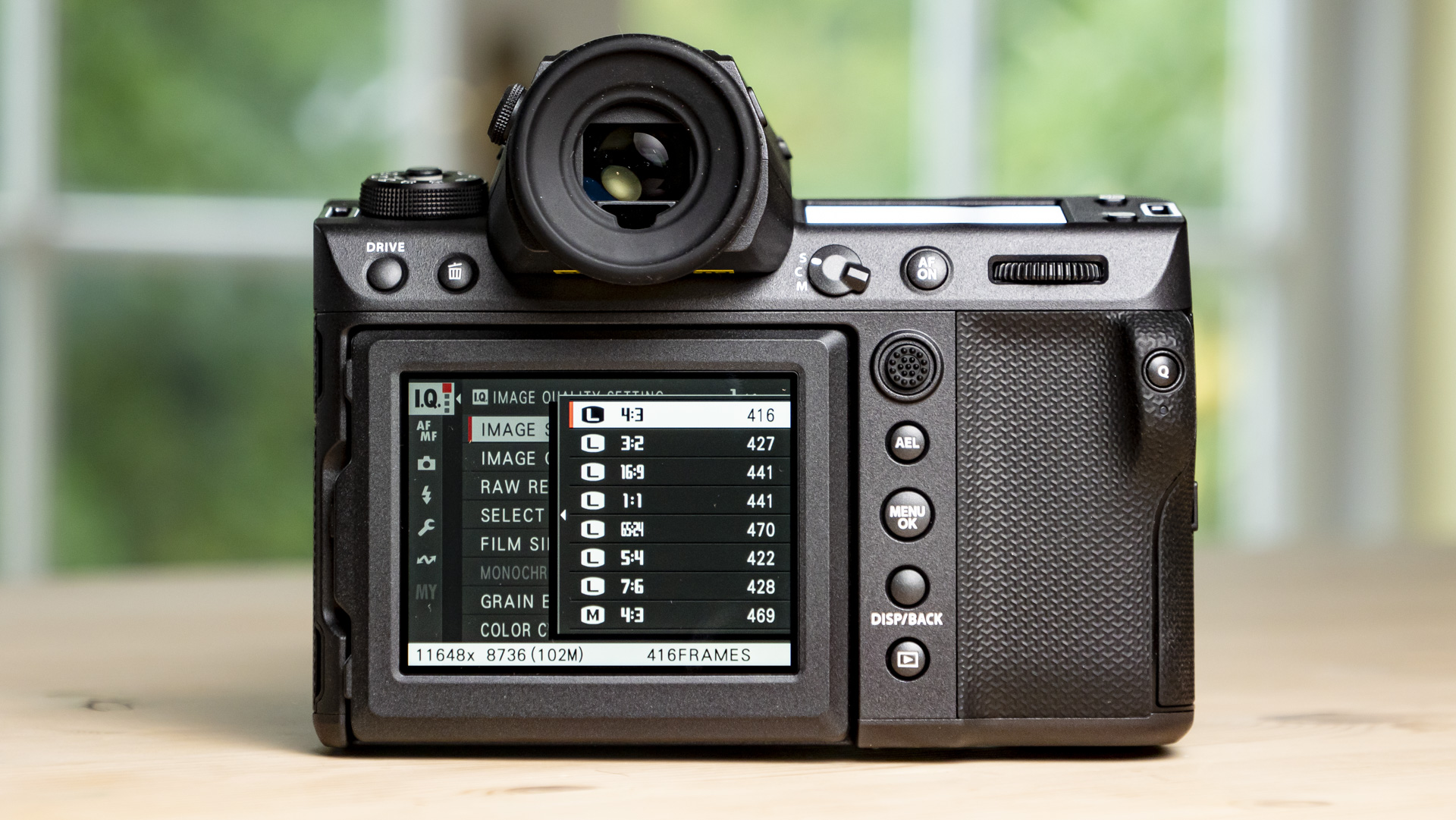
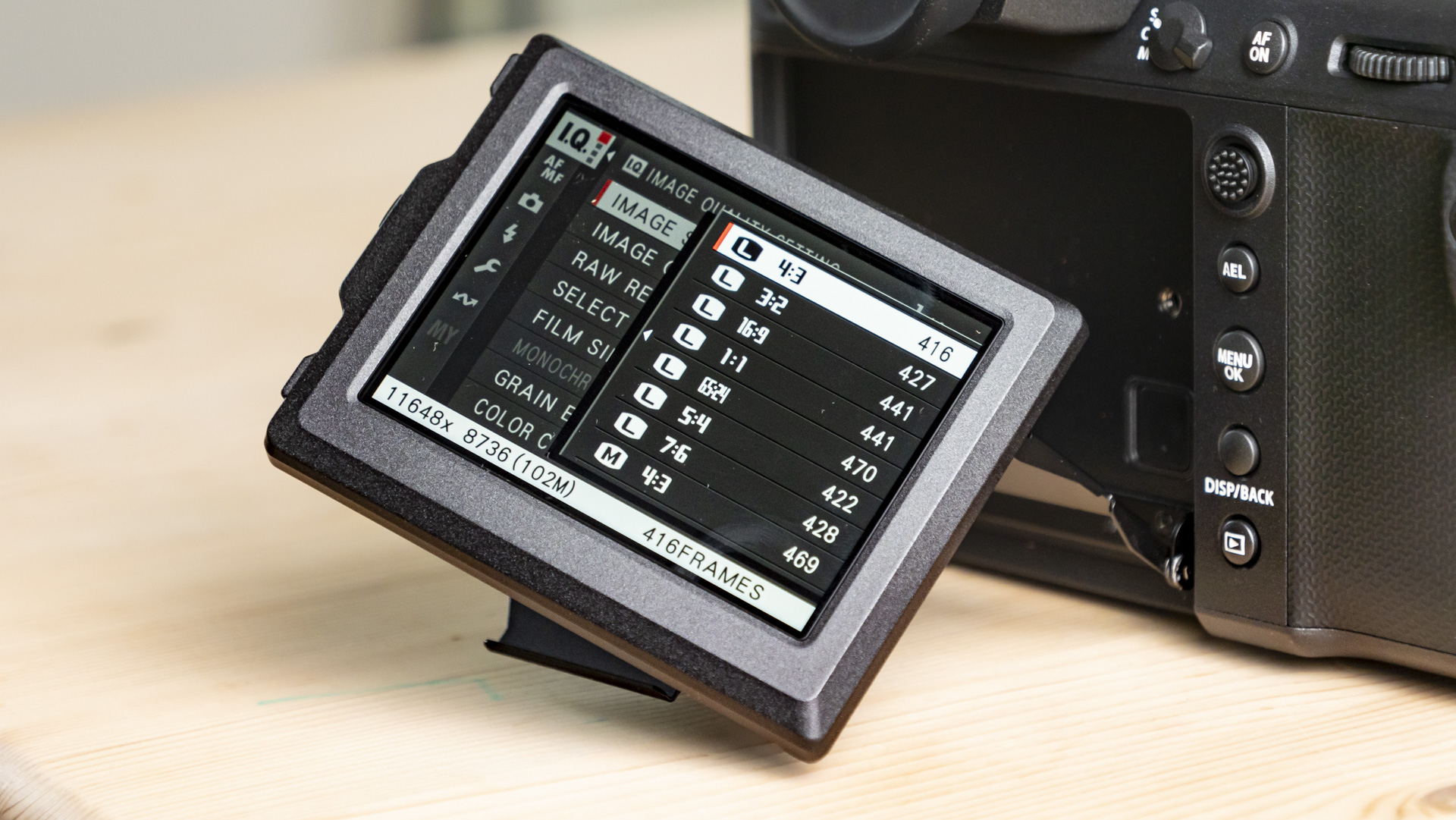
The on-sensor in-body image stabilization unit has been redesigned, too, upping the maximum effective stabilization to 8-stops from the 6-stops we can get with the GFX100. Powerful image stabilization is game-changing for a large-sensor, high-resolution camera like the GFX100 II where softness caused by camera shake is all the more obvious. You won’t need a tripod as often with the GFX100 II.
I’ve taken multiple handheld photos incrementally slowing the shutter speed down to see just how far I could push the GFX100 II’s in-body stabilization for photography, and in general, I think 8-stops is optimistic, and there are more effective rivals. Still, I could get regularly achieve sharp handheld images using the 55mm F1.7 lens with a shutter speed of 0.5 sec, which by my reckoning is about 5-stops and still mightily impressive for a 102MP camera.
In short, the GFX100 II is the most capable medium-format camera ever.
- Features and performance score: 5/5
Design
- Similar size to the GFX100S
- Compatible with optional grip and EVF adaptor
- Best-in-class 9.44m-dot EVF
Fujifilm was keen to make it clear to me that the GFX100 II succeeds the $10,000 / £10,000 GFX100 and not the half-price GFX100S, but the reality is that the GFX100 II does the job of both, which is actually great.
We get the smaller form factor of the GFX100S, but now with the option to bulk it out with the optional VG-GFX II vertical grip for portrait format shooting and increased battery life. The GFX100S cannot be paired with a grip, nor in fact with the EVF-TL1 tilt adaptor accessory. The GFX100 II on the other hand, has a removable 9.44m-dot EVF, which means it can also pair with the optional tilt adaptor for waist-level viewing, synonymous with medium-format.
The viewfinder display is a healthy 0.64-inches, with a 1x magnification, and that 9.44m-dot is only equaled by the Sony A7R V. In plain speak, this is the largest and sharpest electronic viewfinder around, although to gain the best possible 120fps refresh rate for high-speed situations, you’ll need to switch to the 0.5-inch display setting with 5.76m-dot resolution. It's also not entirely blackout-free at the 8fps burst rate either when shooting full-resolution images.
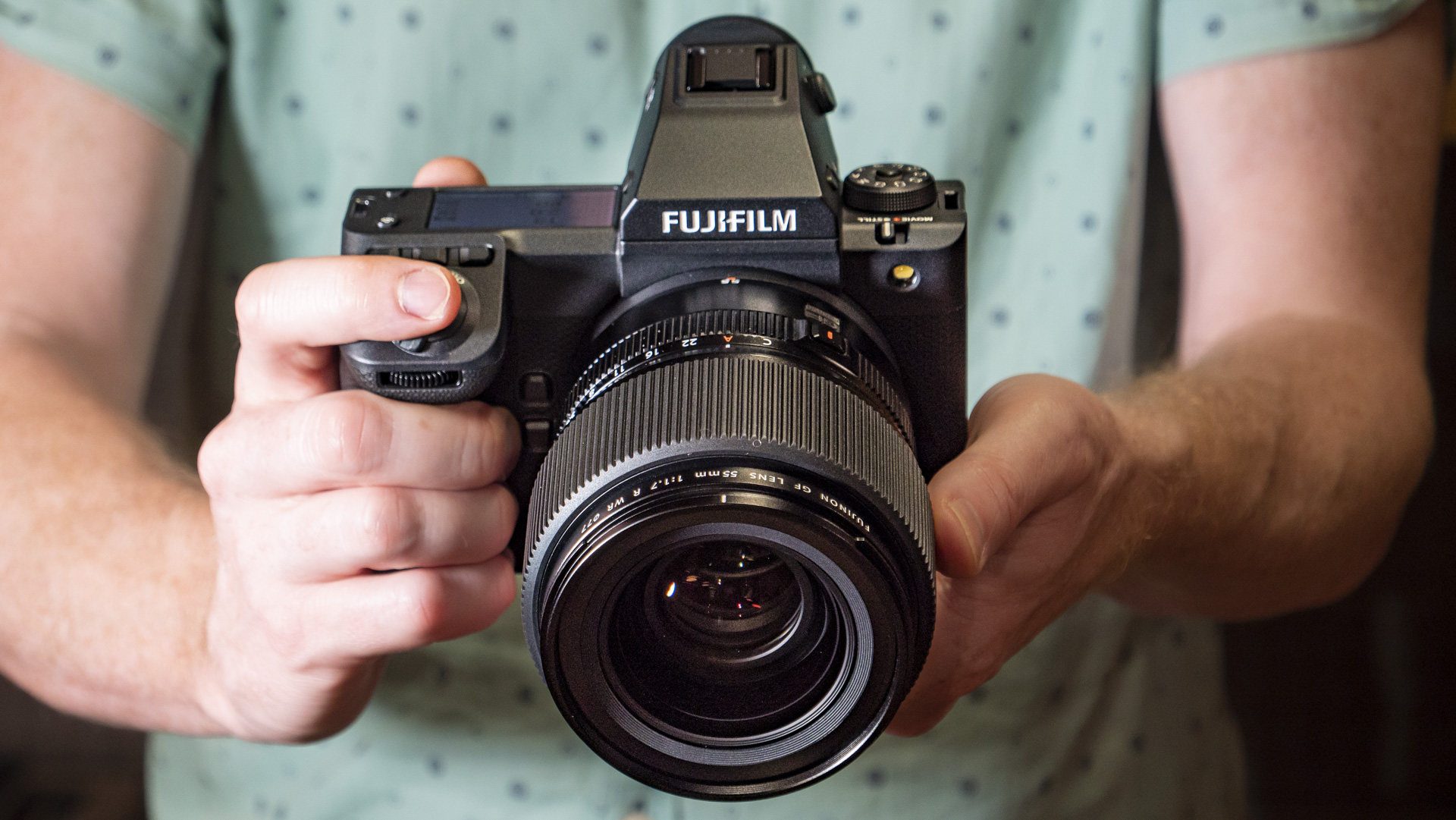
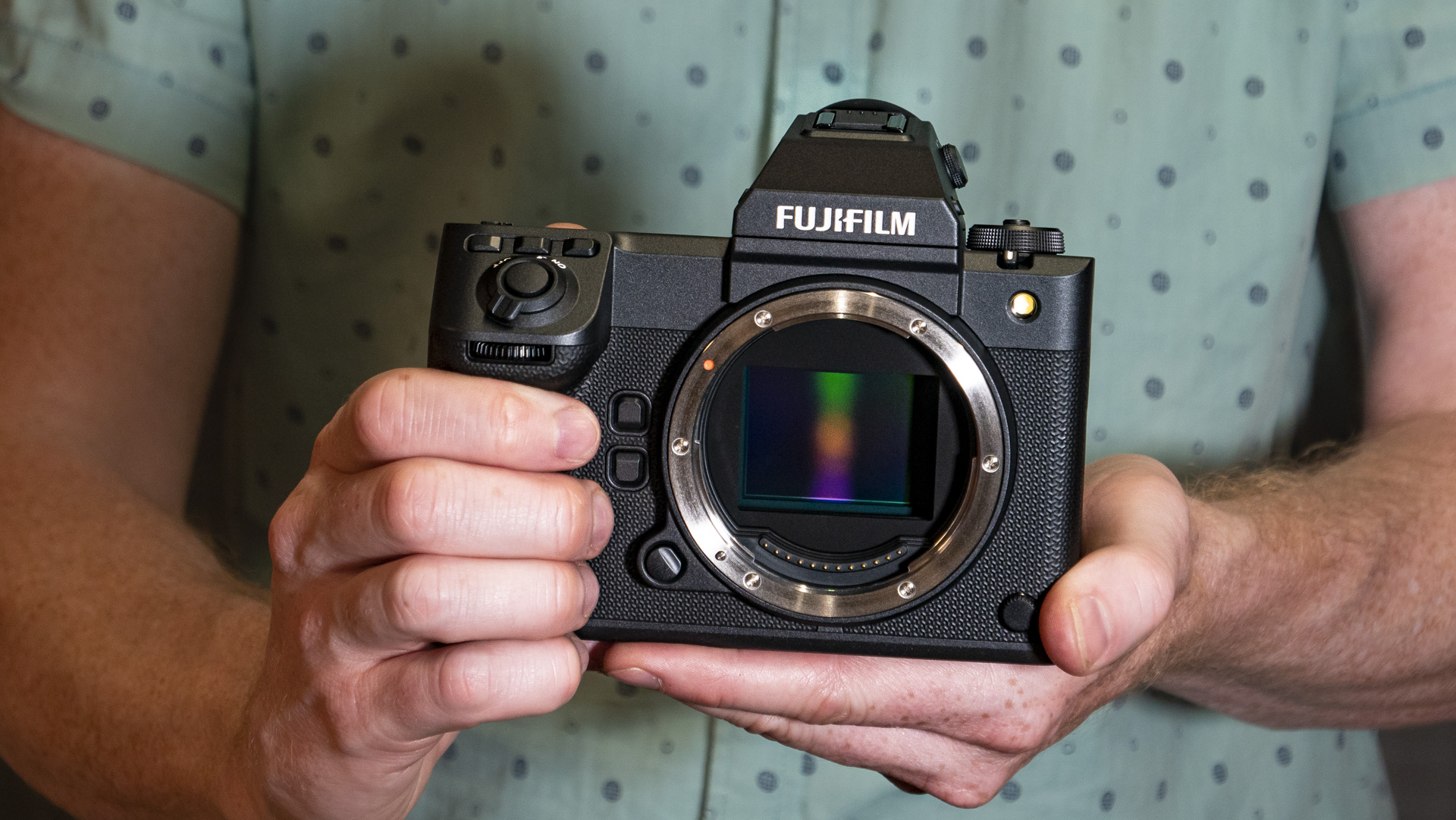
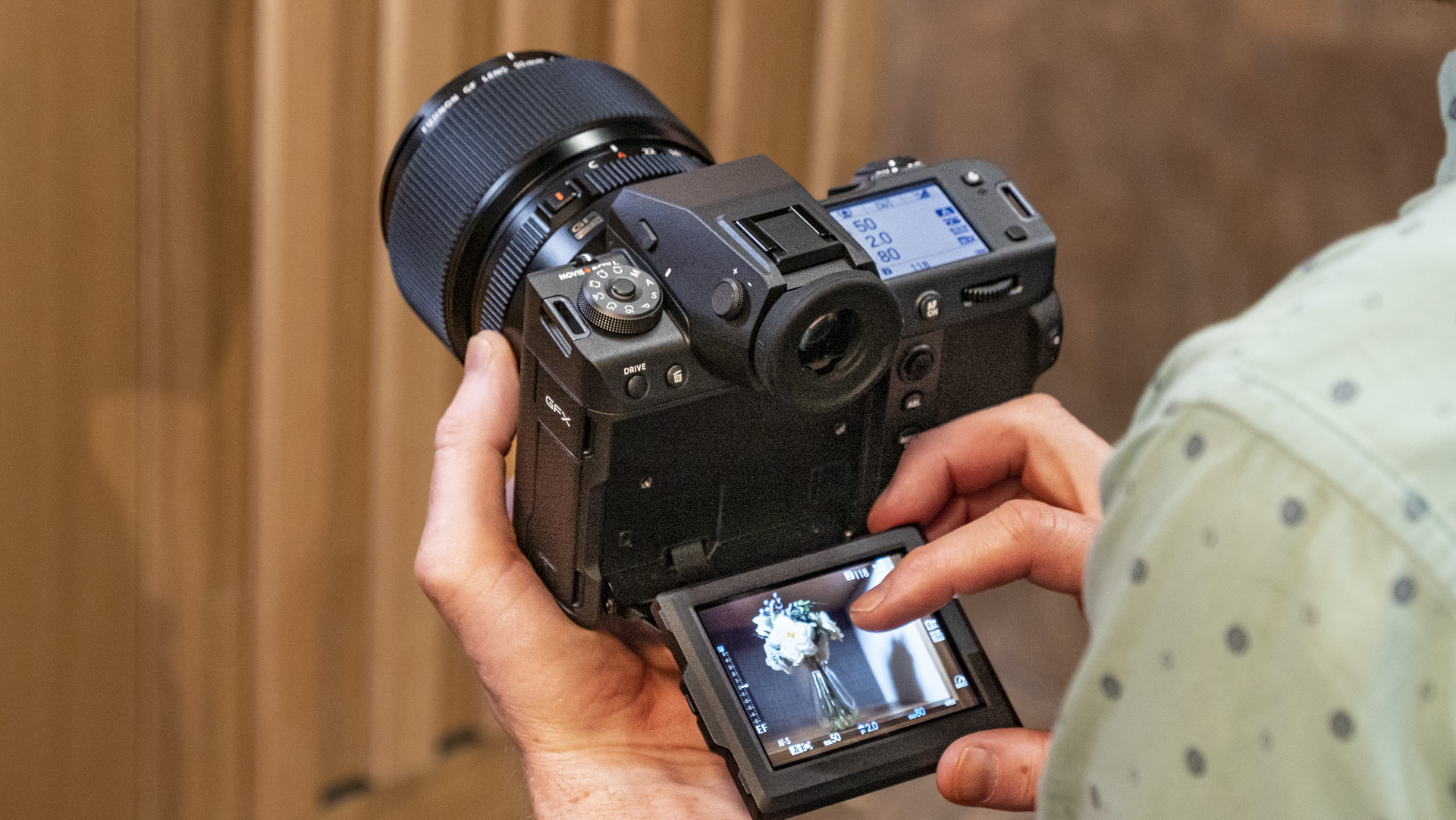
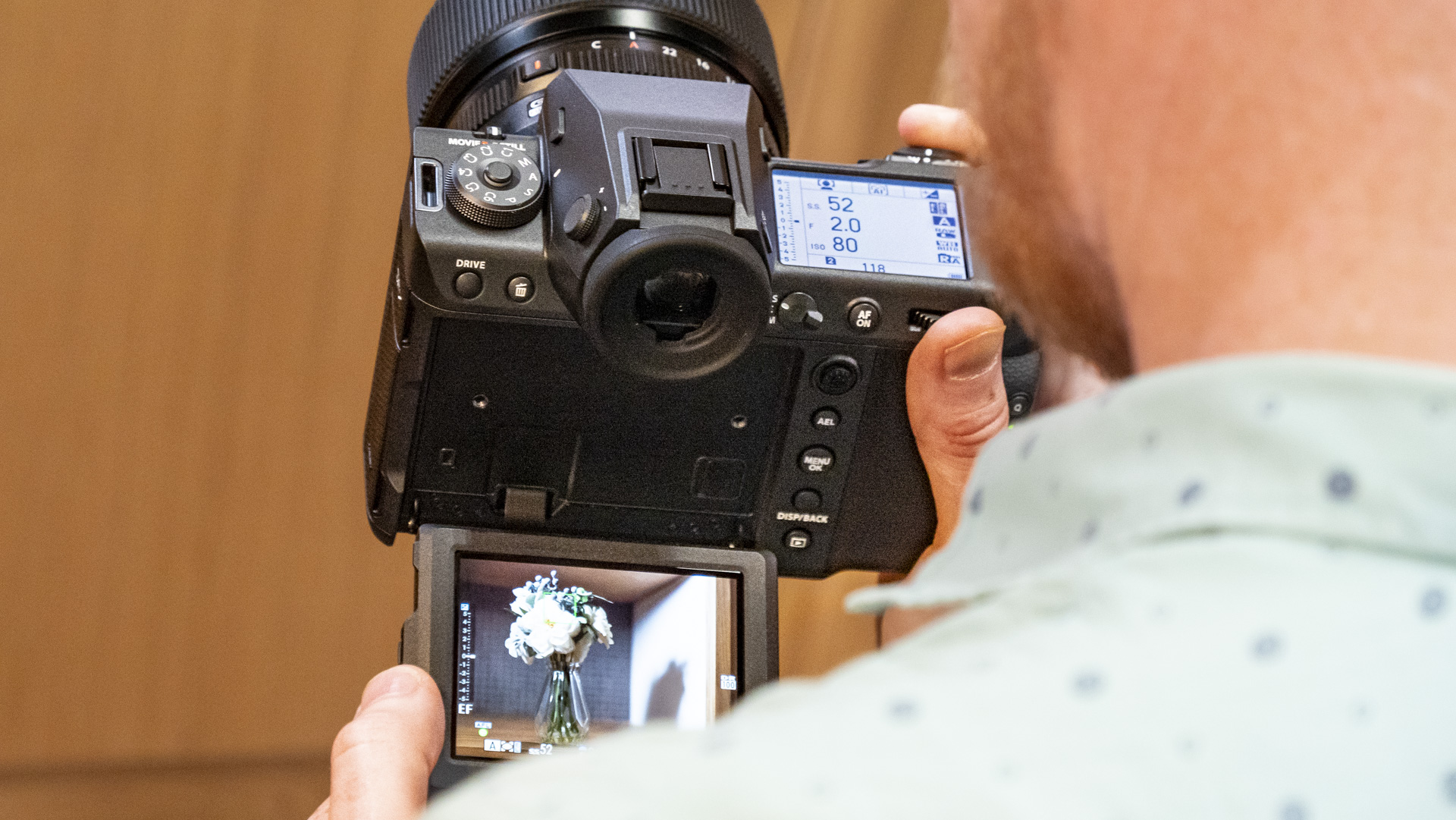
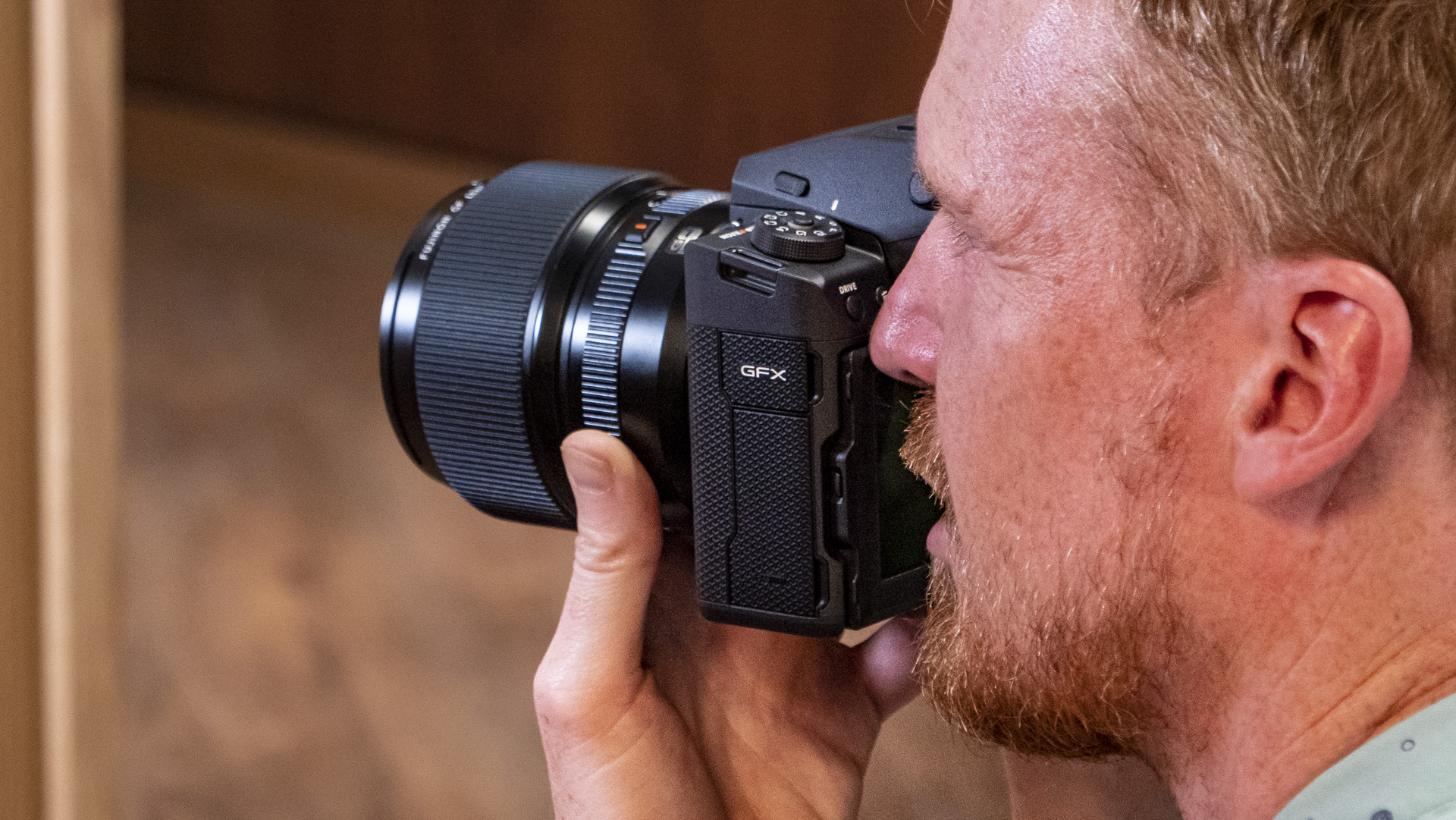
There’s also a two-way tilt touchscreen, meaning you can tilt the screen up or down in both landscape and portrait orientation, but it doesn’t flip out to the side of the camera – a style that we call articulated or vari-angle – for selfie viewing.
Saying the body is smaller than the GFX100 doesn’t mean it's small – this is medium-format after all. By way of comparison, the GFX100 II, with the new GF 55mm F1.7 R WR lens attached (one of four lenses that I had for this review), is like an advanced DSLR such as the Canon EOS 5D Mark IV.
The GFX100 II sits in the hand comfortably enough – it has a better hand grip than other GFX models – but if we’re purely talking design I still prefer the photography experience with the Hasselblad X2D 100C.
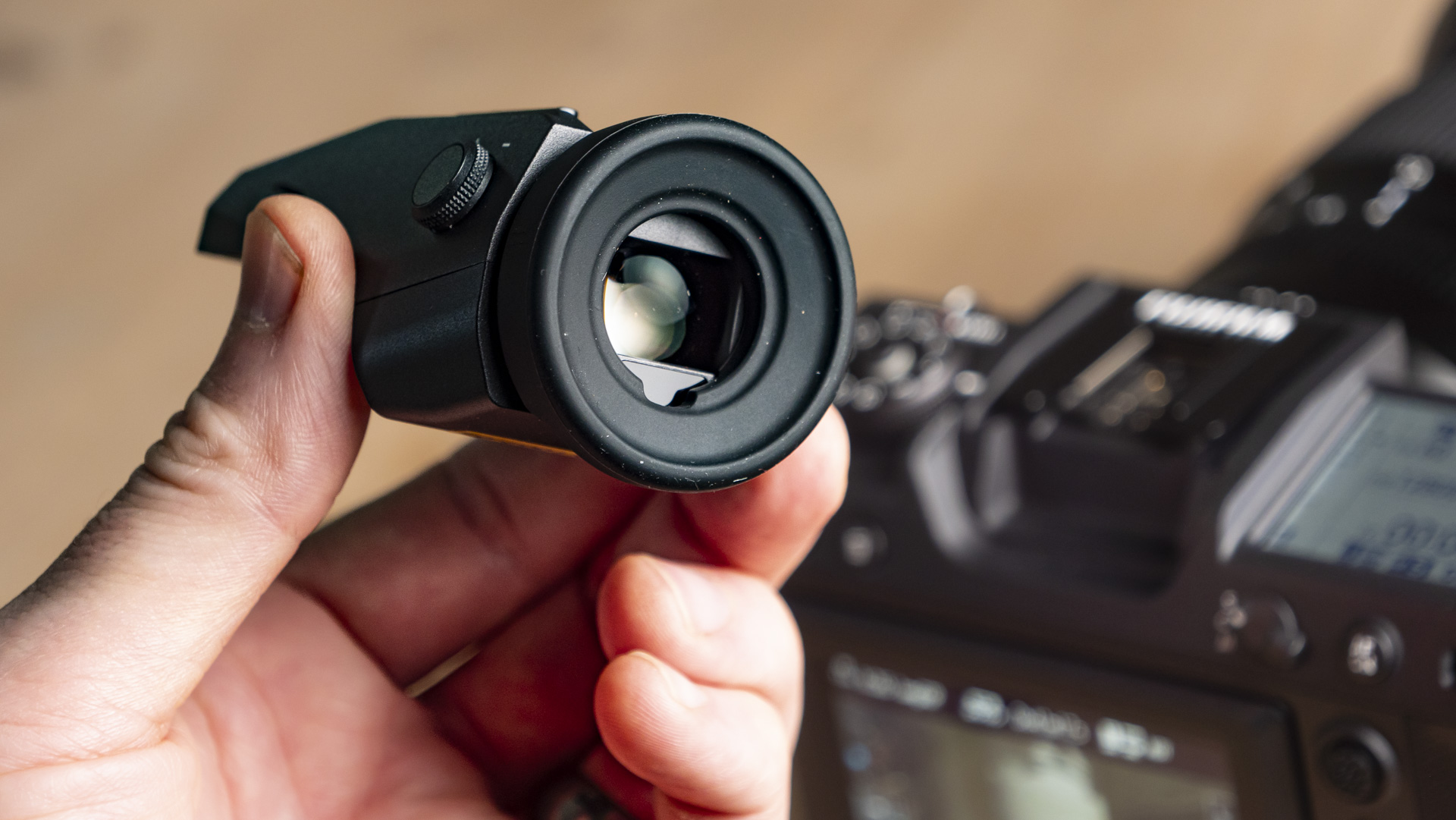
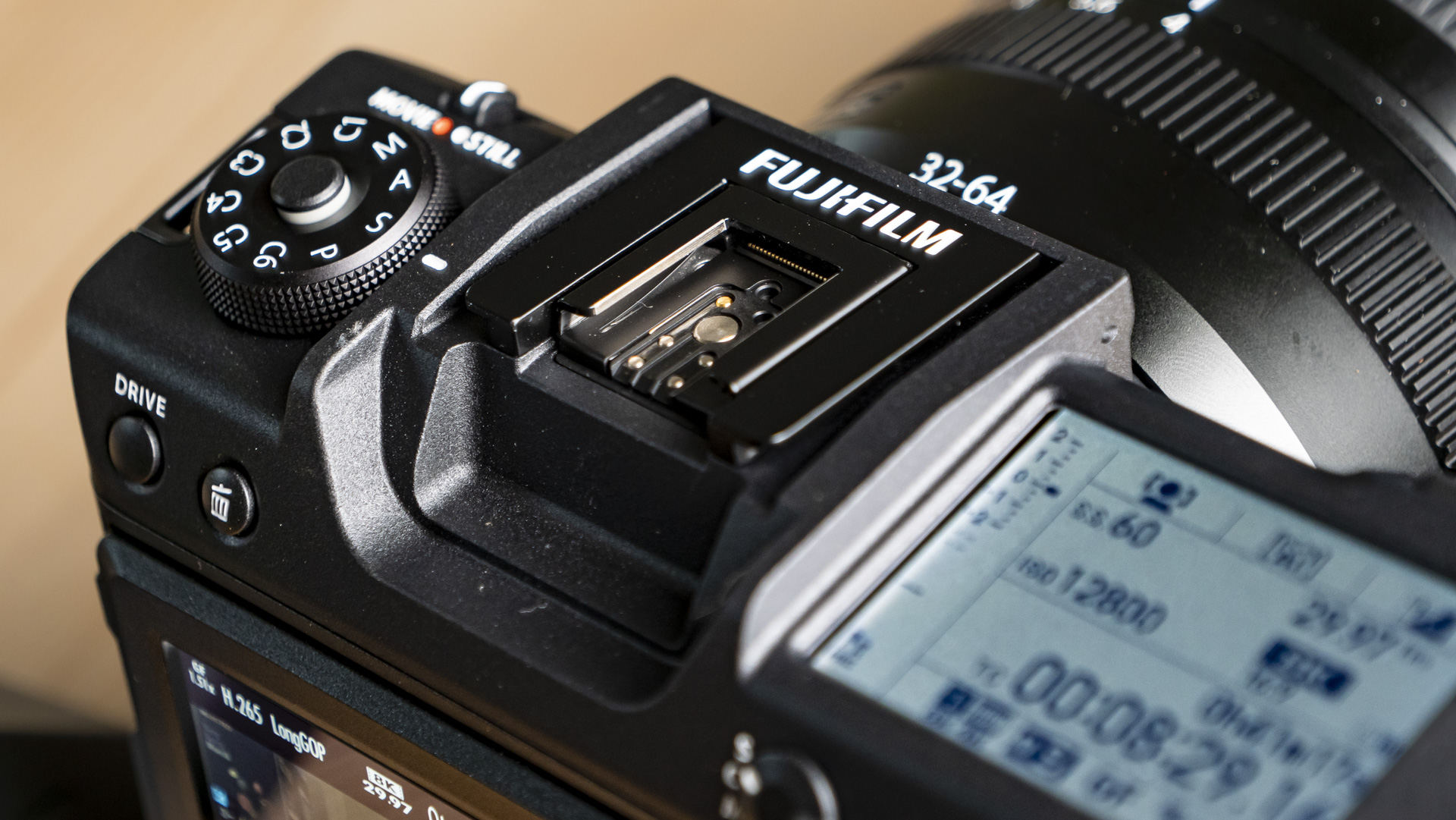
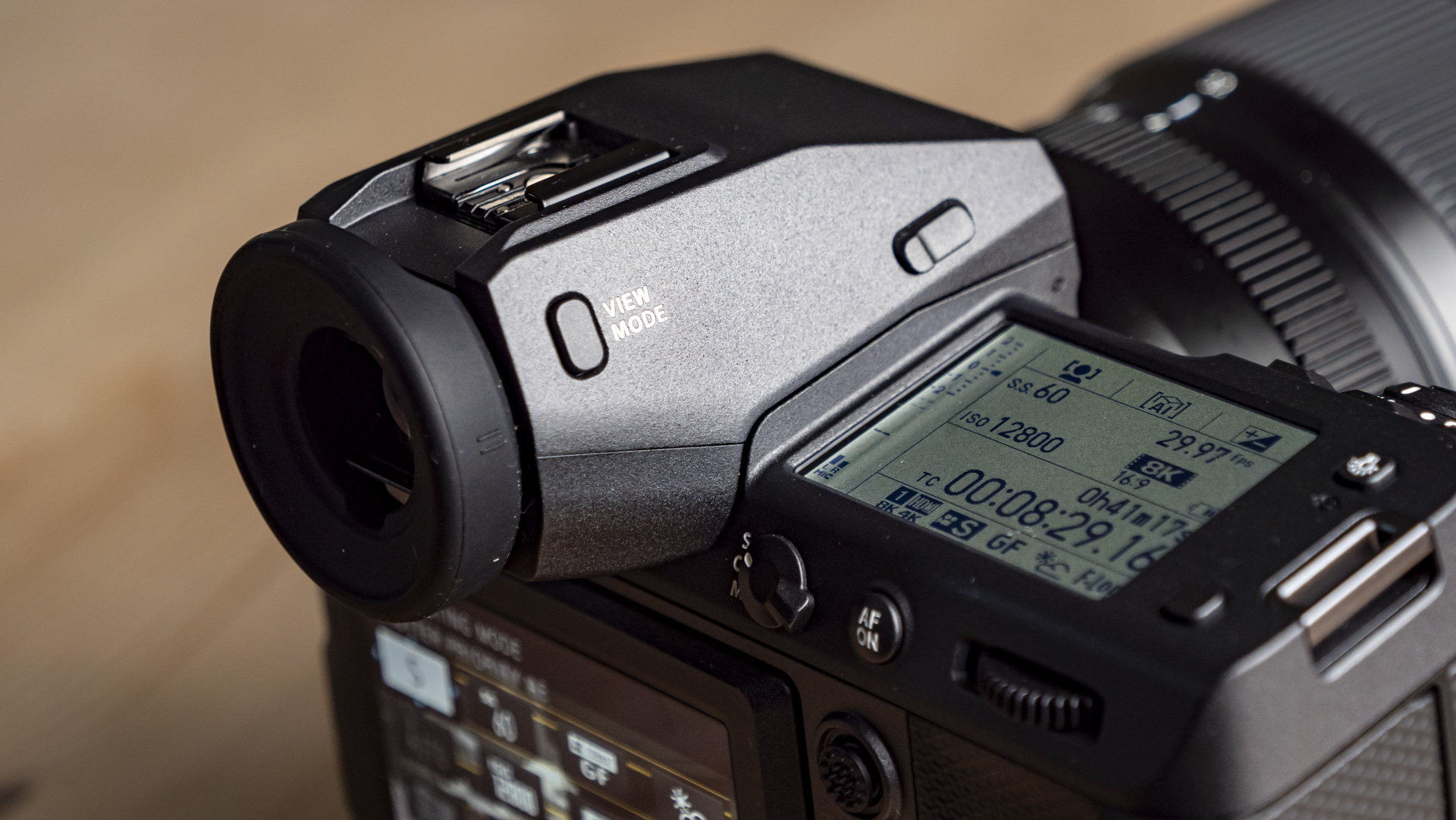
The GFX100 II still handles really well, though, and I’m a fan of the generous back-lit top LCD displaying key exposure information (Fujifilm calls it a sub-monitor). A neat customization option for this top LCD is it can be used to display a histogram, or twin ISO and shutter speed dials instead of the list of exposure information – the latter is the option that I settled on after some time with the camera.
A digital representation of the exposure dials on the top LCD highlights the lack of these physical controls on the GFX100 II that we’ve come to know and love in Fujifilm’s retro offerings like the X-T5. Indeed, the GFX100 II appears to be from an altogether different era, with a brutalist, modern touch.
I didn’t like the look of the GFX100 II when I first laid my eyes on it around the time of the Fujifilm X-Summit in Stockholm, but after more time with the camera during this in-depth review, its looks have grown on me. In fact, I think Fujifilm could go even further in a potential successor; more industrial, more brutalist, and more modern.
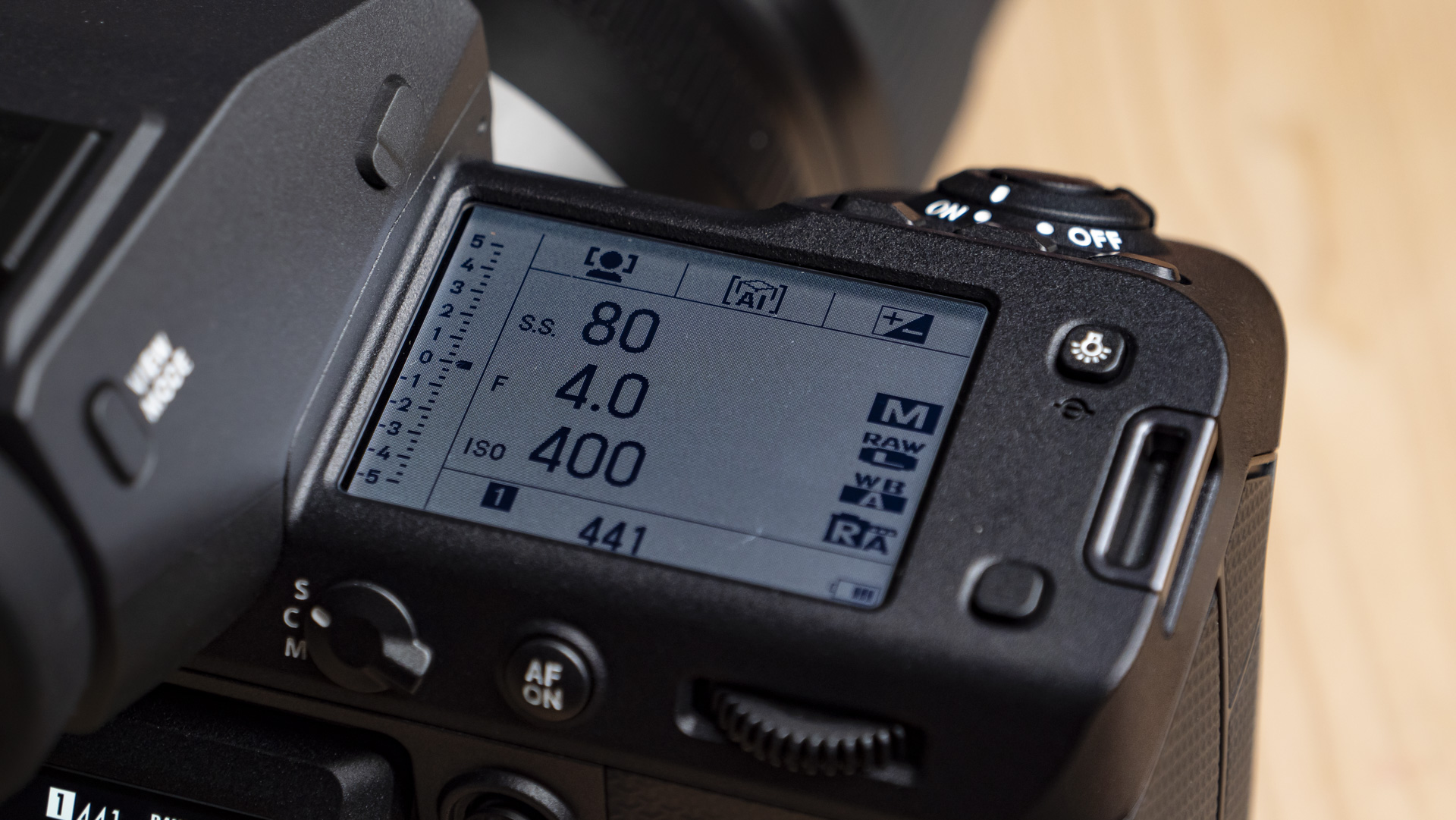
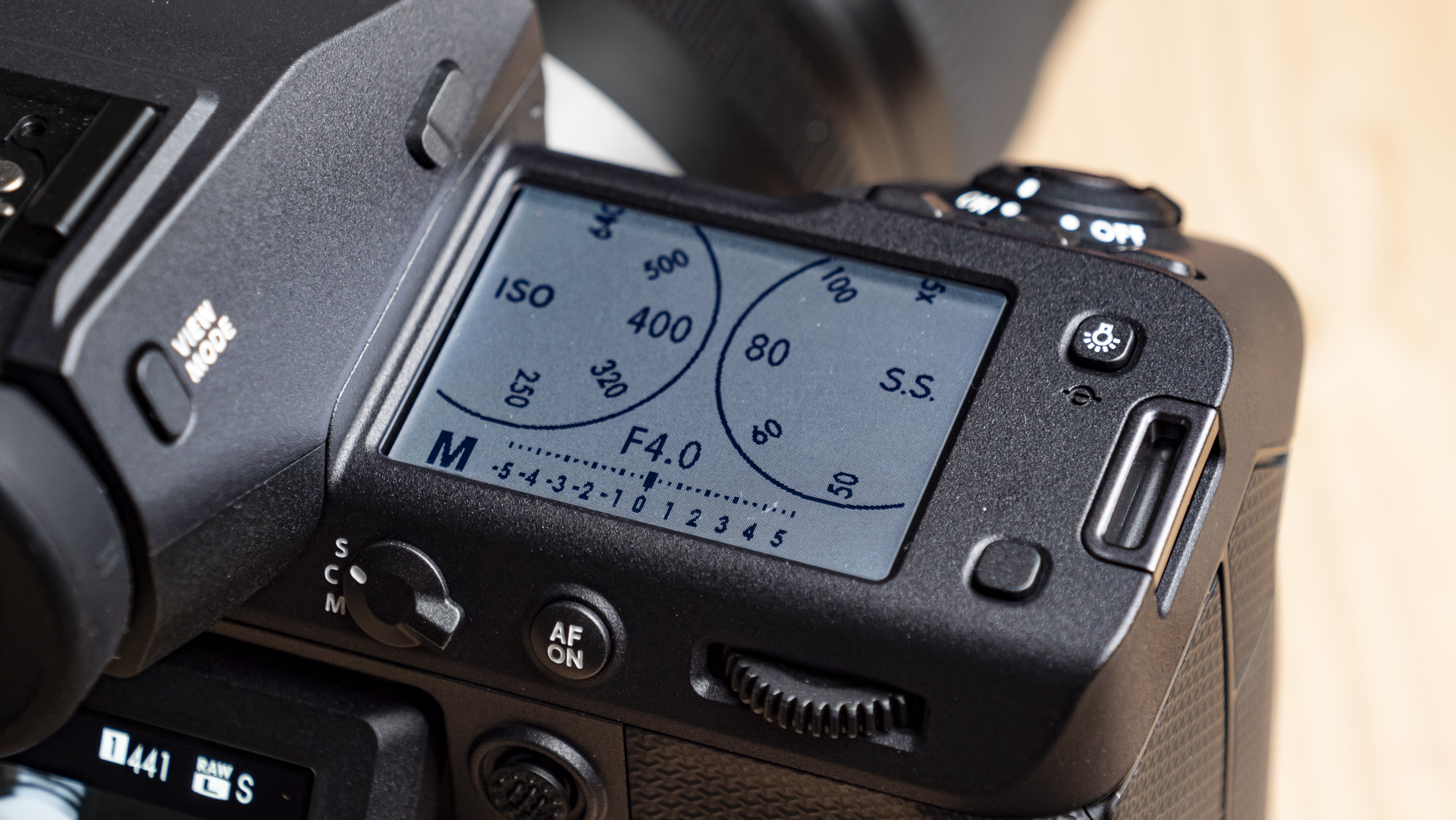
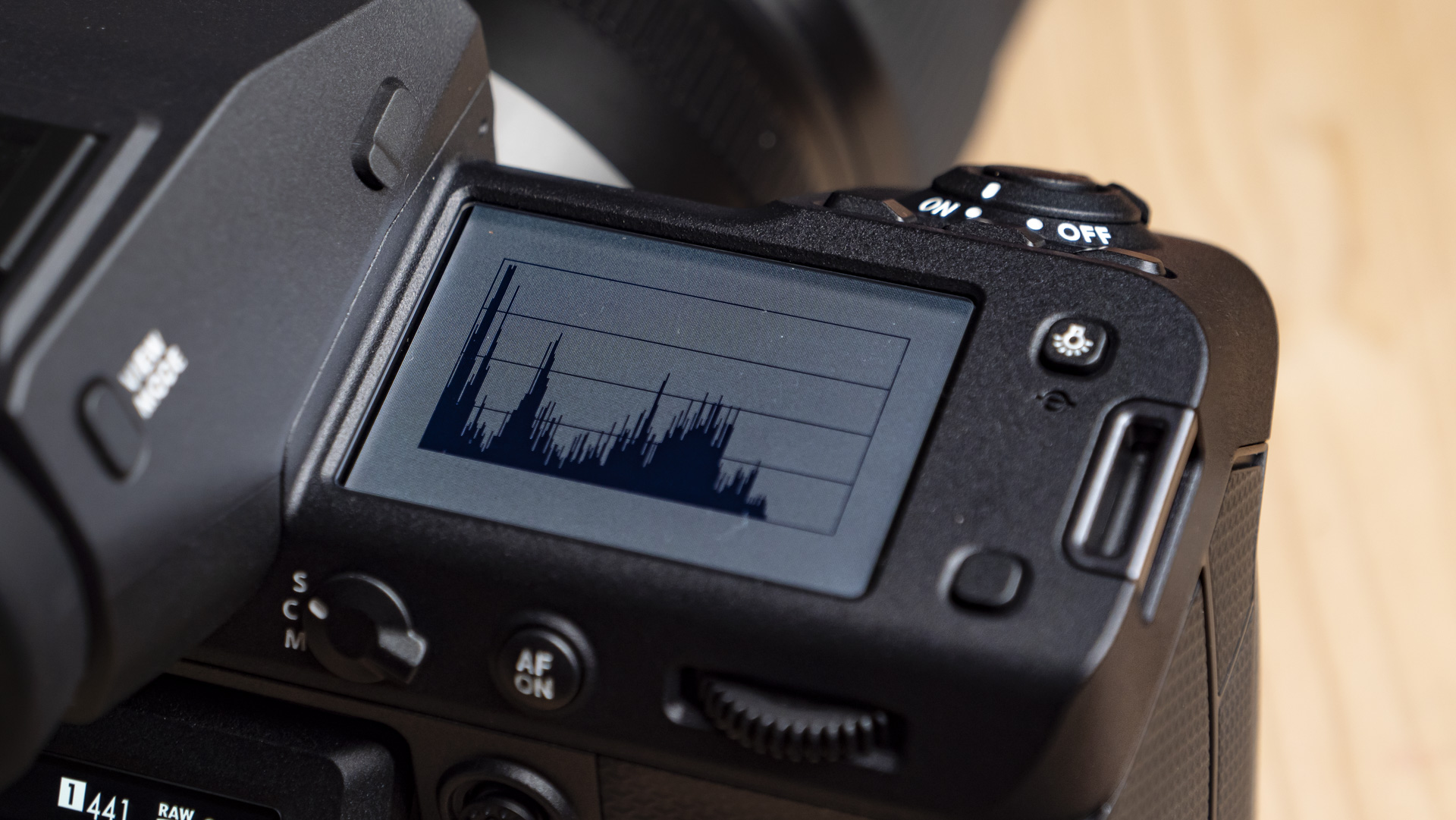
There’s not a whole load of dedicated buttons around the body, but there are plenty of customizable options, plus you can press the front control dial for quick access to exposure settings, customizable for the like of ISO, aperture, and shutter speed control.
Even though the GFX100 II utilizes the same WP235 battery as the GFX100, this second iteration boasts an improved battery life by 20%, rated to 540-shots. Add the optional vertical grip with additional batteries and of course, battery life can be further extended.
On paper, the GFX100 II’s video spec is among the best of the best, but design-wise this is primarily a photography camera. Professional videographers would expect XLR input to connect serious audio equipment, while all GF-mount lenses so far are photography-first in their design, too.
- Design score: 4.5/5
Image and video quality
- New 102MP sensor with improved light intake
- 8K / 30p and 4K / 60p video
- New Reala Ace color profile
The new 102MP sensor builds on the already excellent GFX100 sensor with a redesign at the photodiode level. Each micro lens has a 30% extended capacity of the photodiodes, which improves dynamic range and realizes a base ISO 80 sensitivity setting (the GFX100 has a base ISO 100). If good light is available, the GFX100 II will provide the best dynamic range in the series yet, and potentially the best of any camera for a single-shot photo.
And who doesn’t like a Fujifilm film simulation? The array of color profiles – inspired by Fujifilm film stock – now has another addition; Reala Ace. It’s a natural yet rich profile, with plenty of tonal detail in highlights, and an excellent addition to the now 20 choices you have (albeit that number includes two black and white profiles each with four different filter effects). There can’t be too many more film simulations to add now, and Reala Ace is an excellent addition.
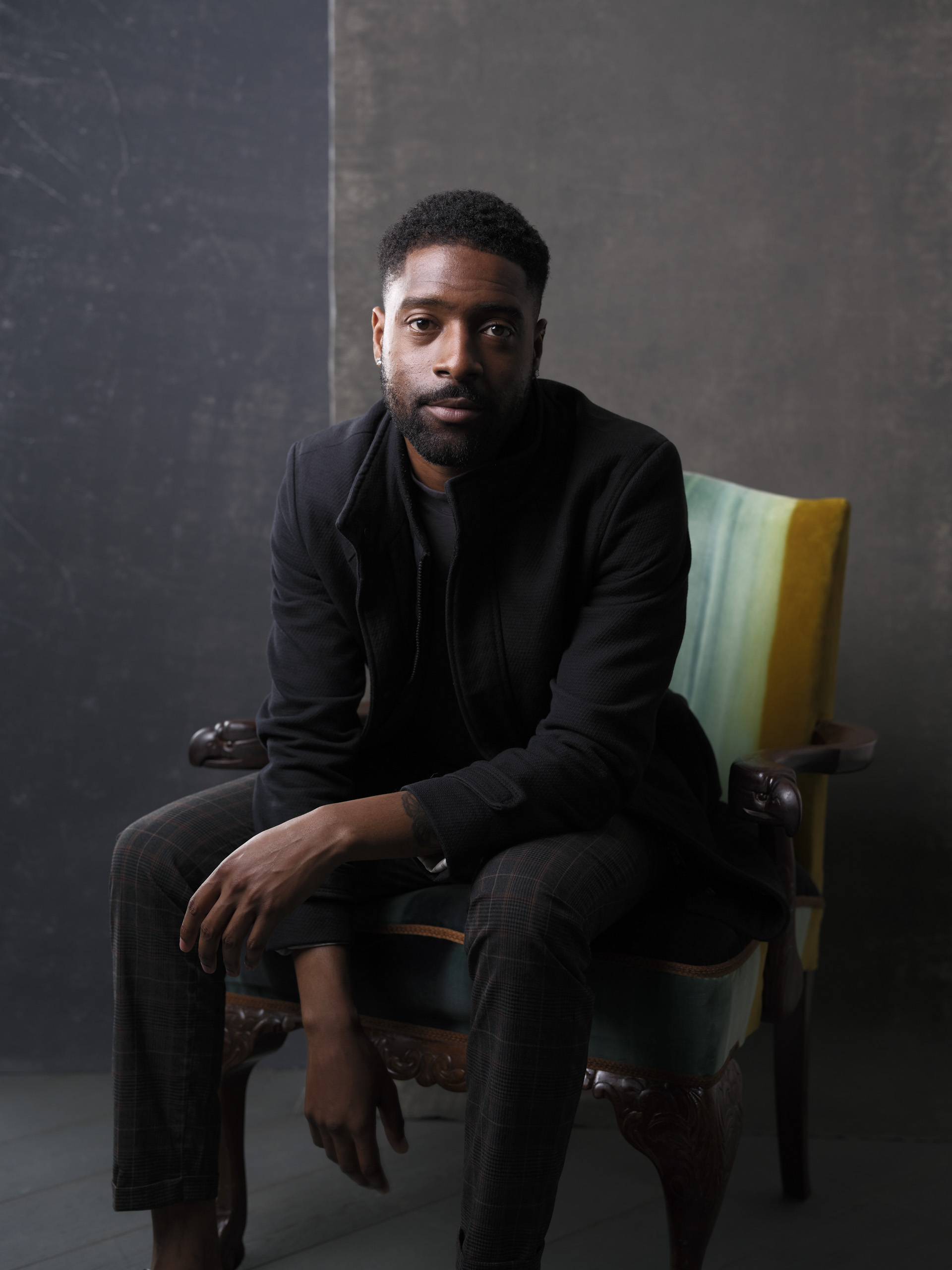
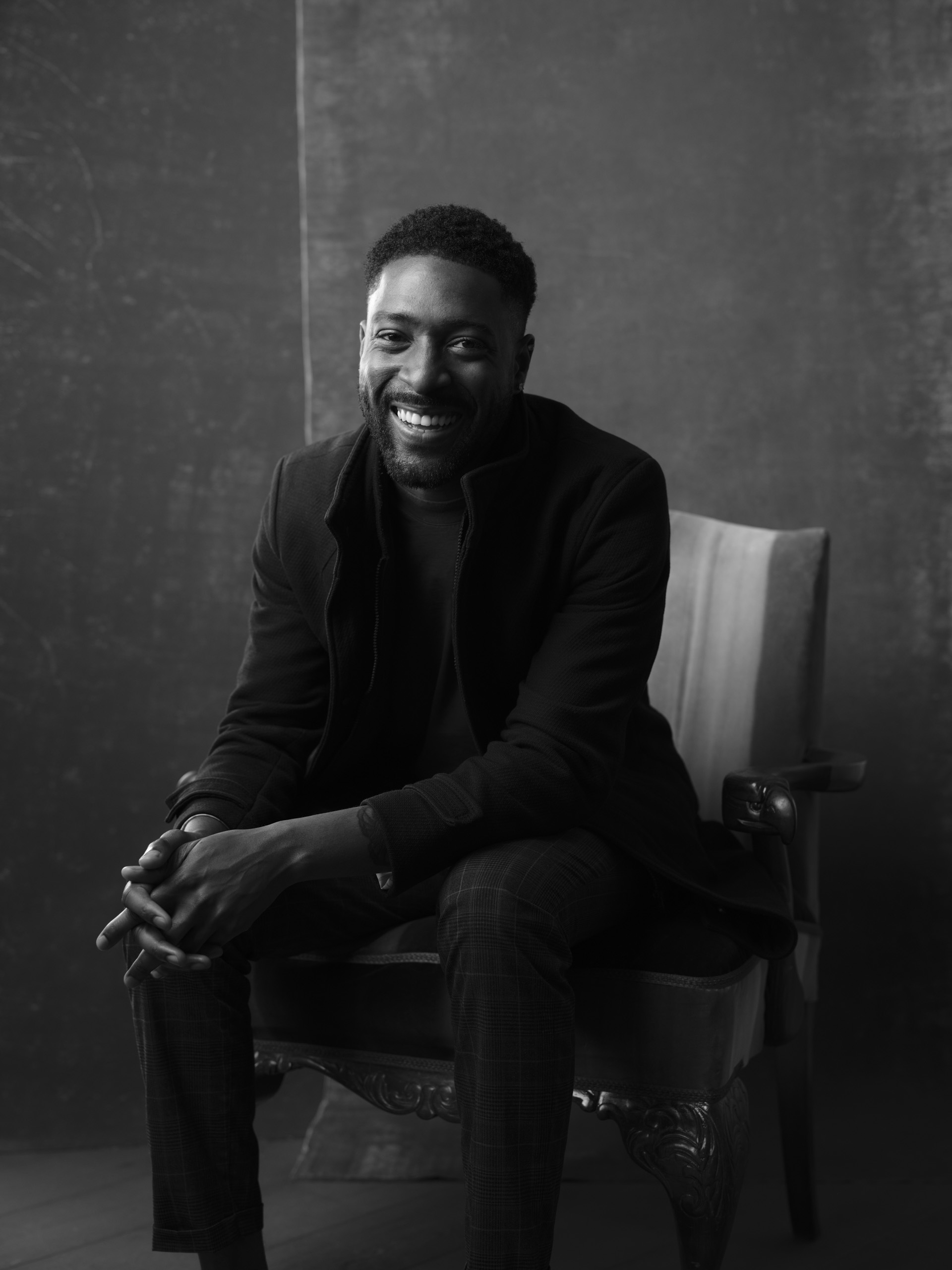
If you tend to stick with the standard color profile, the color rendition of the Hasselblad X2D 100C – a camera that doesn’t otherwise offer you a choice of color profiles – is marginally better. But Fujifilm offers you so much more creative effects, including those real-time luts profiles for photo and video.
We also get a high-res shot mode. It combines sixteen 100MP images into a single 400MP image, though your subjects need to be still and the camera mounted to a tripod. I had a few technical difficulties with the Pixel Combiner software and have not been able to process one of those sequences yet, but such a large image made with such high-quality lenses is an exciting prospect, and I will update my review once I get to see one of my 400MP images in the flesh.
Put simply, if money is no object, then the GFX100 II has just about the best photo quality of any camera.
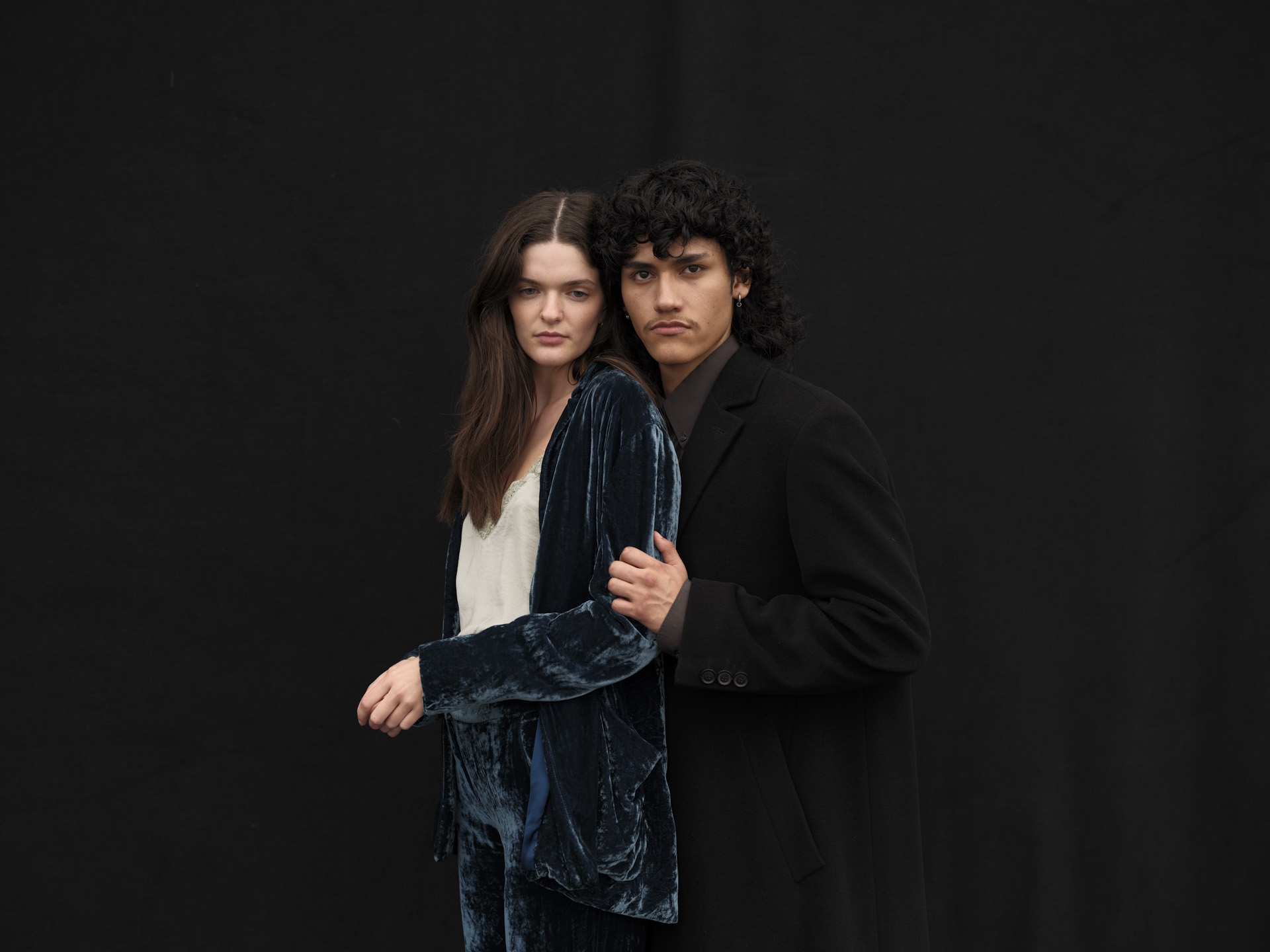
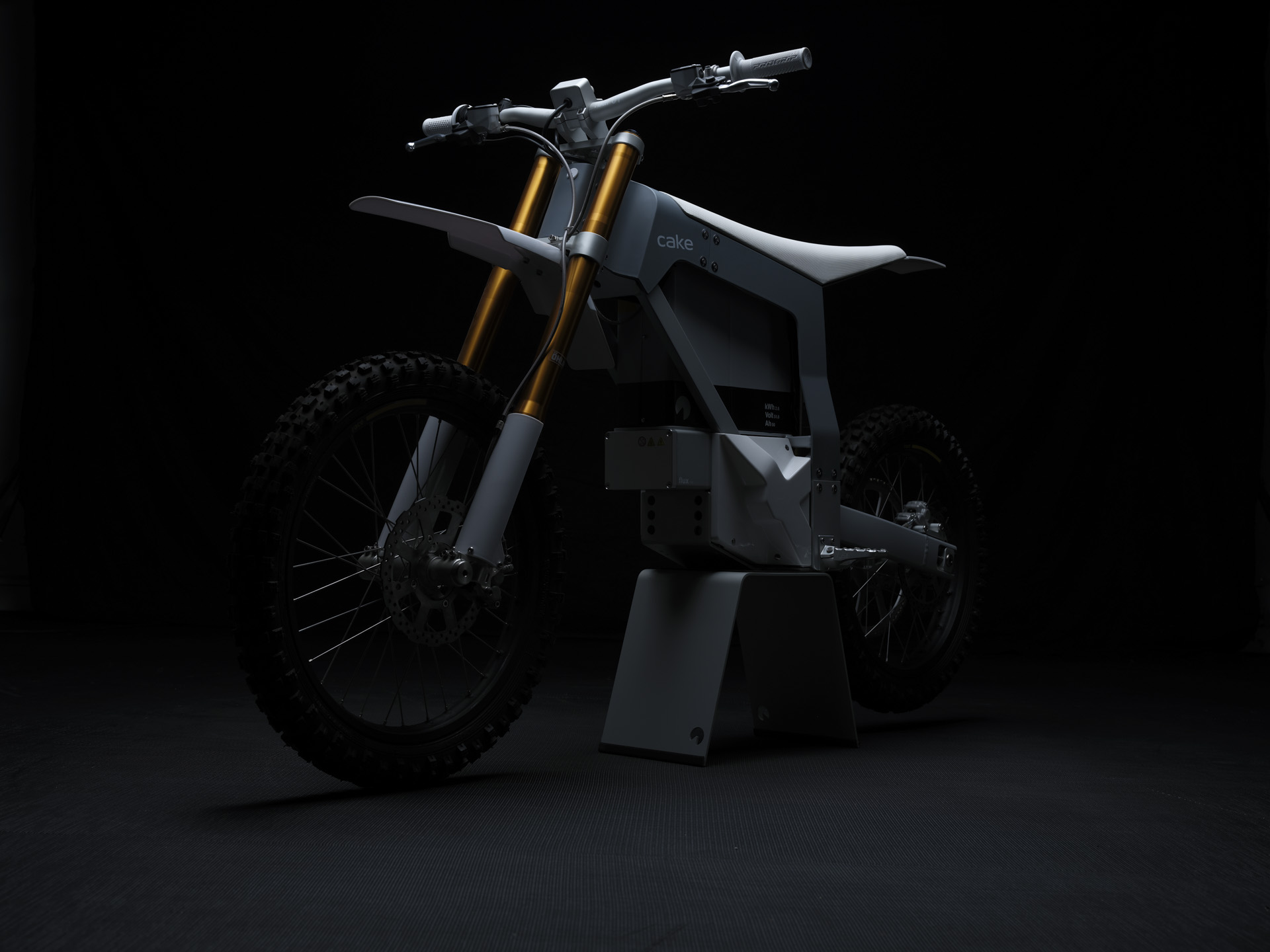
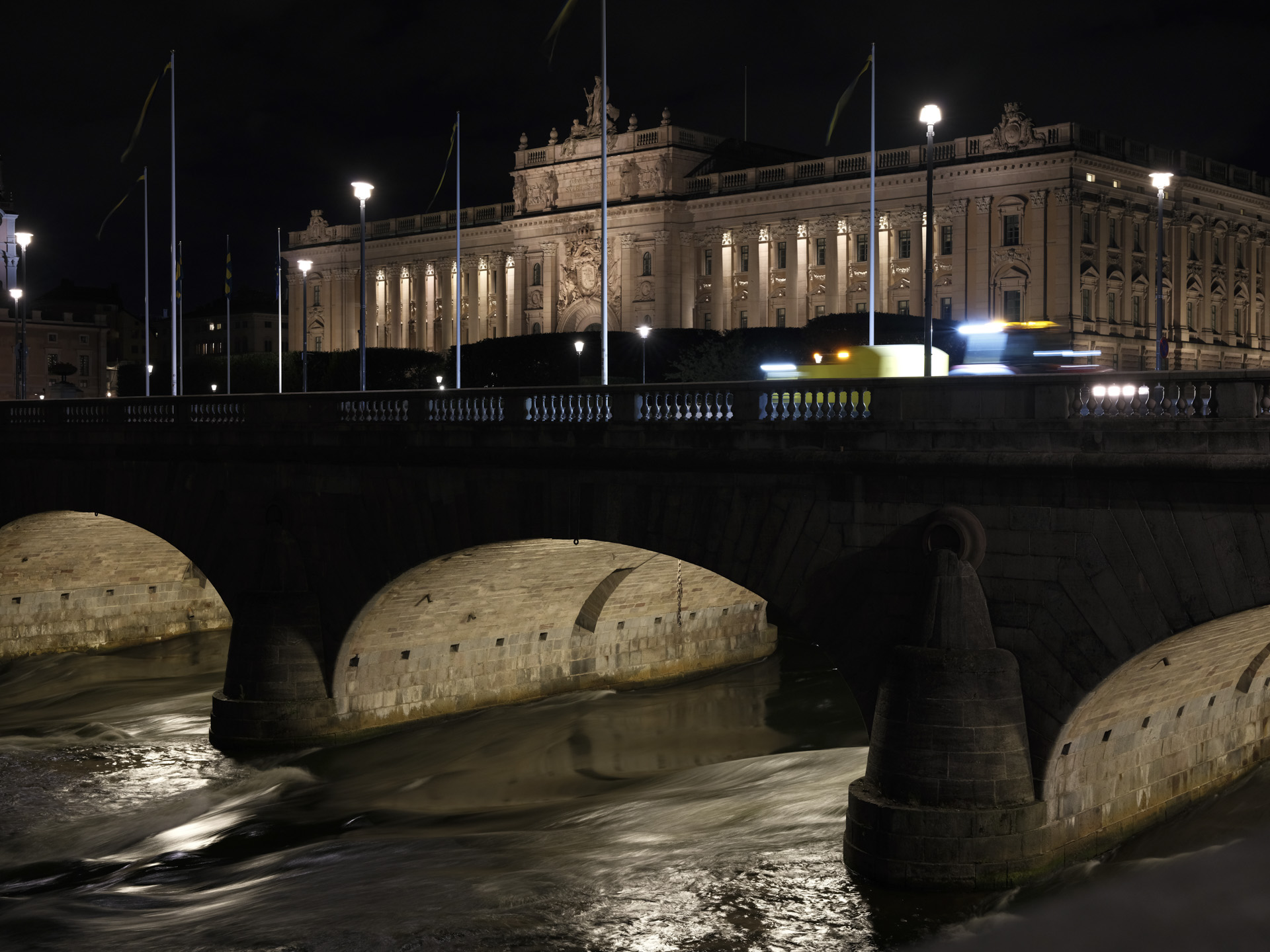
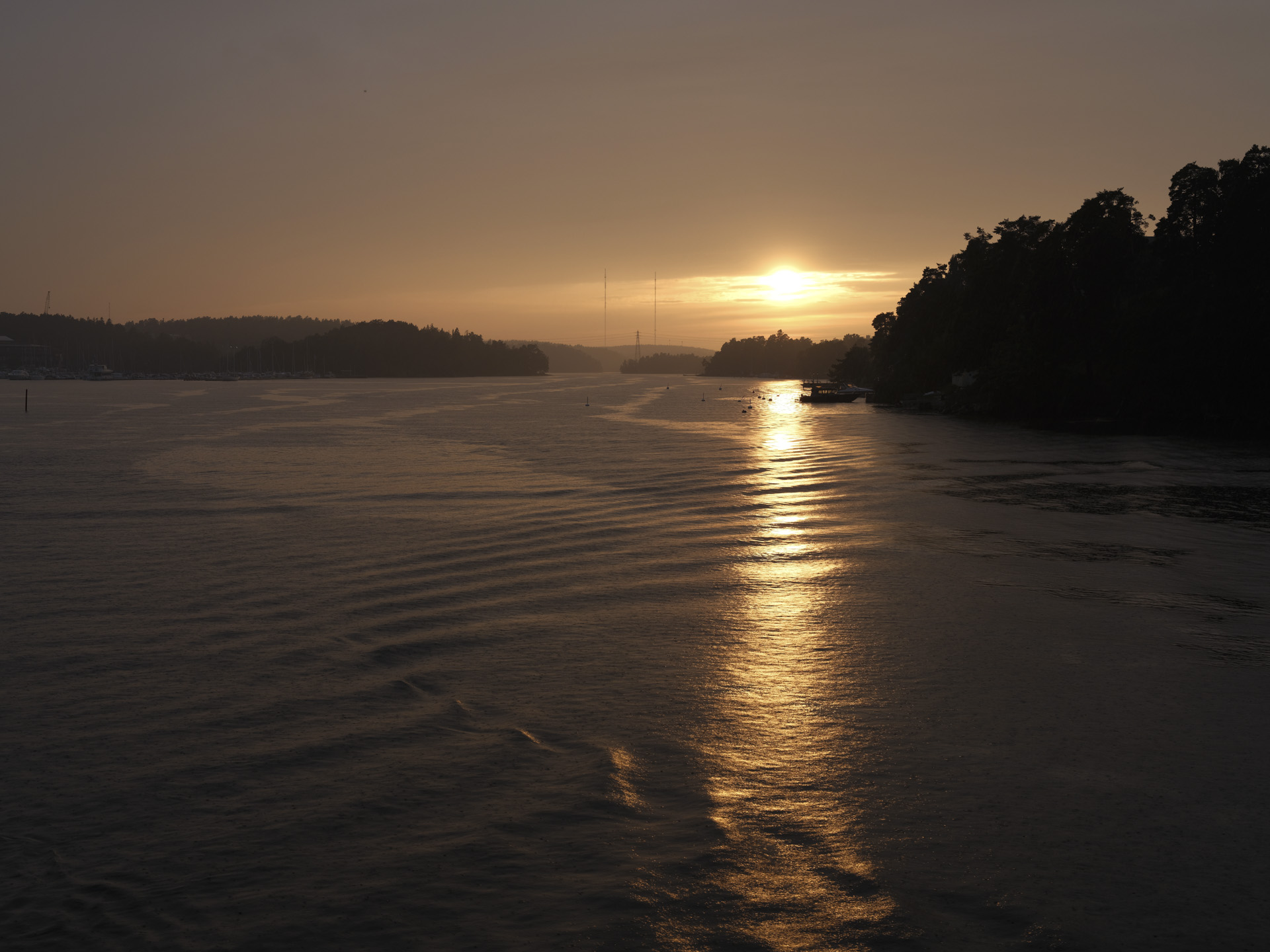
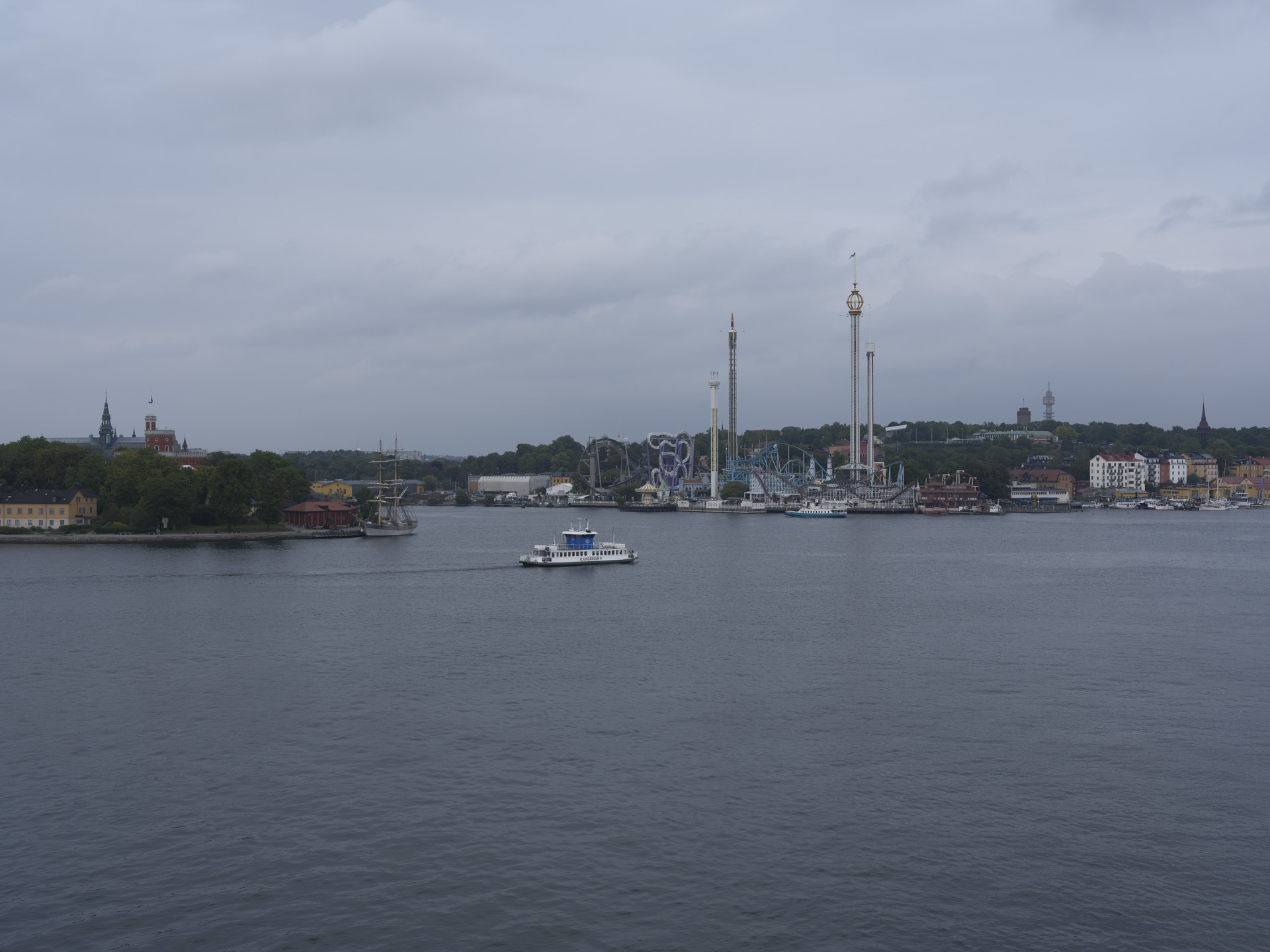
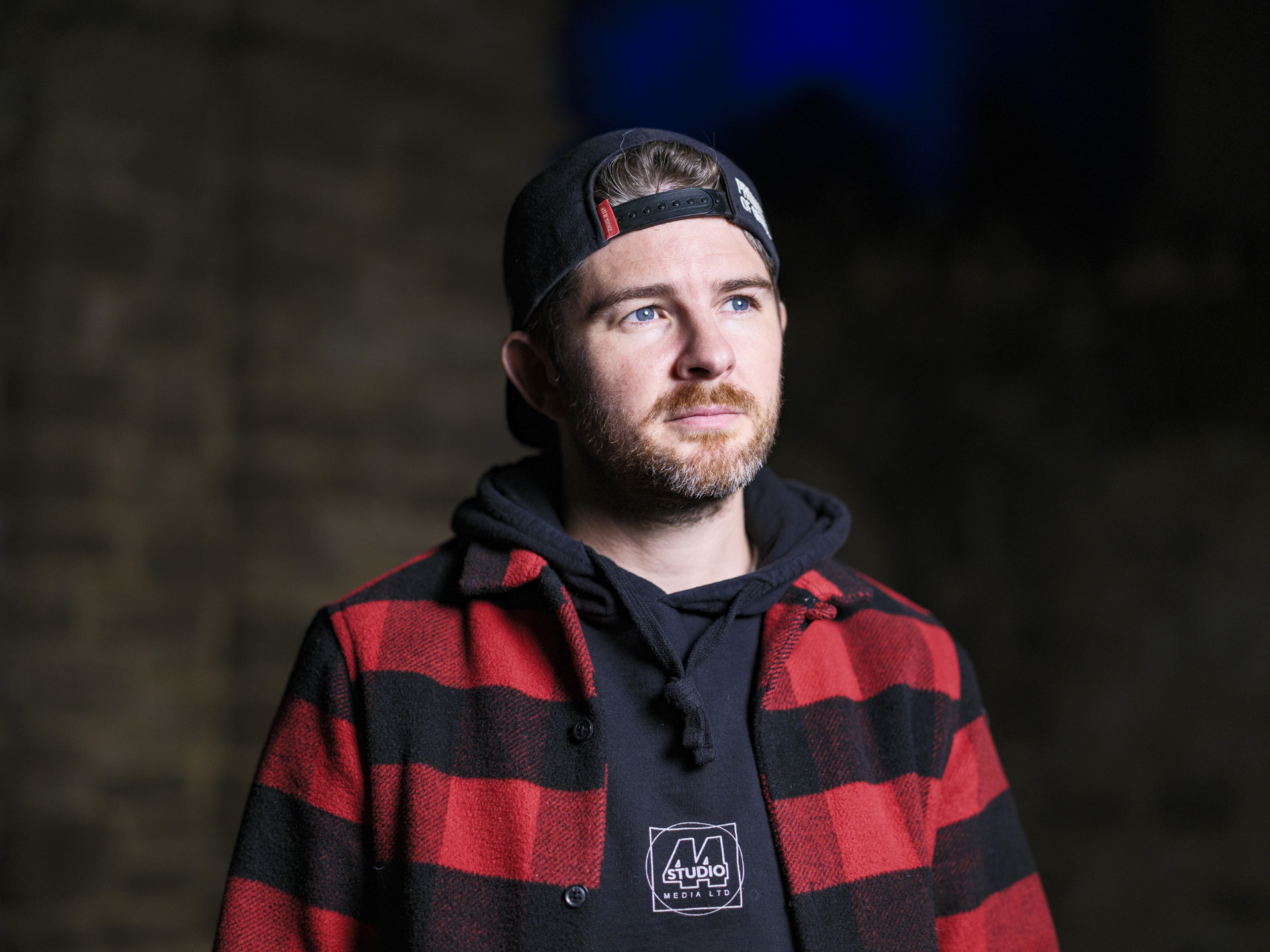
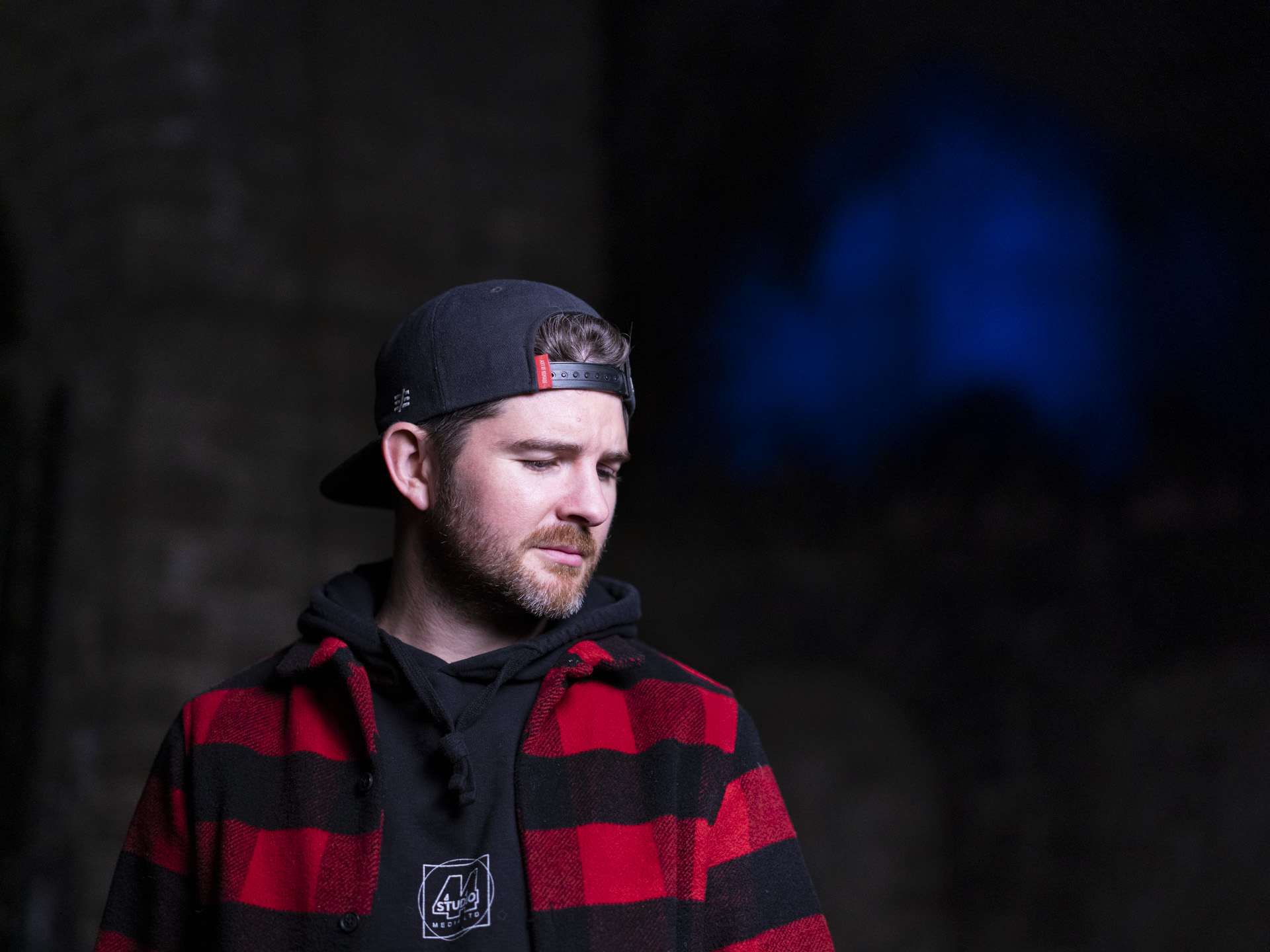
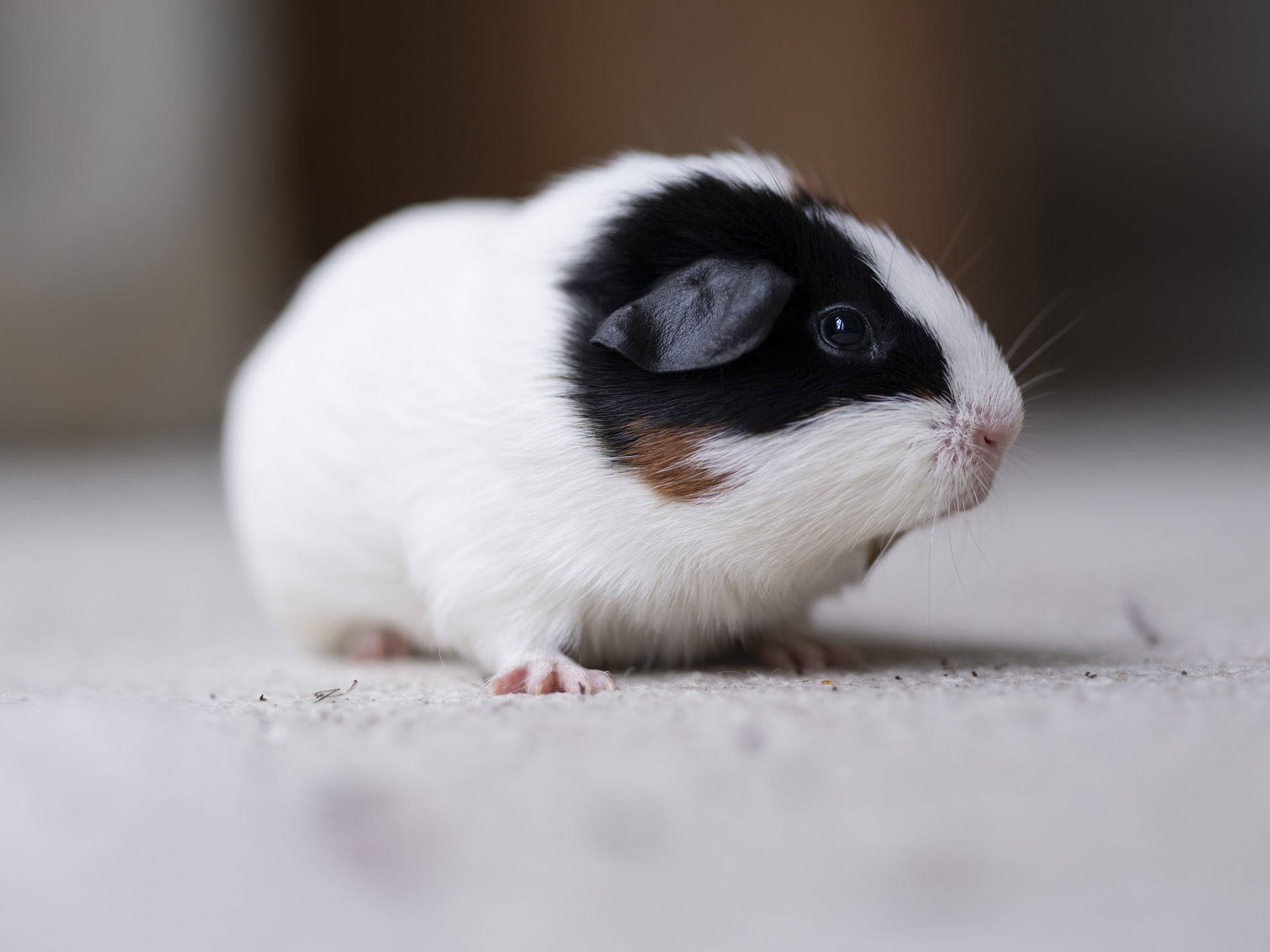
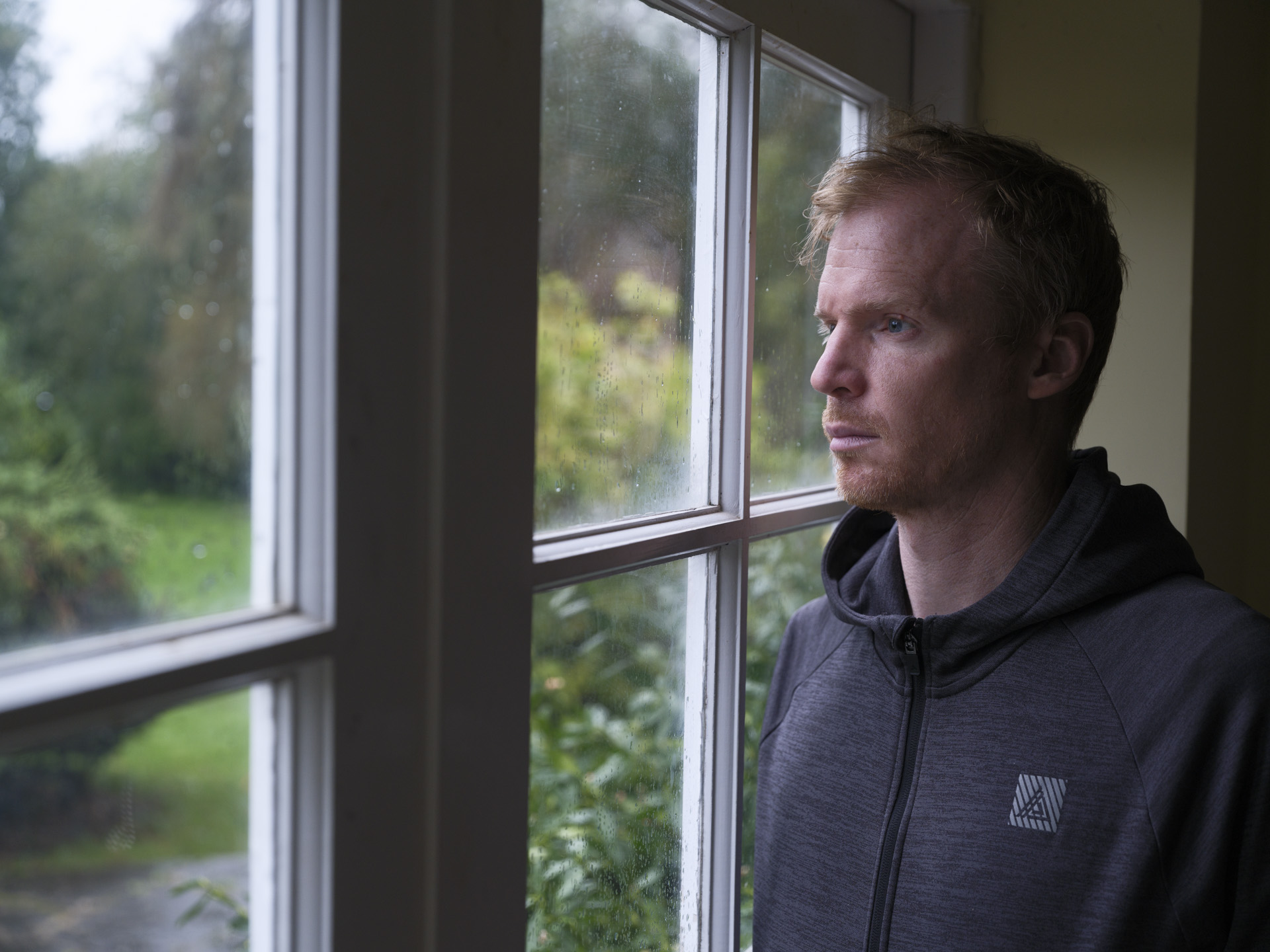
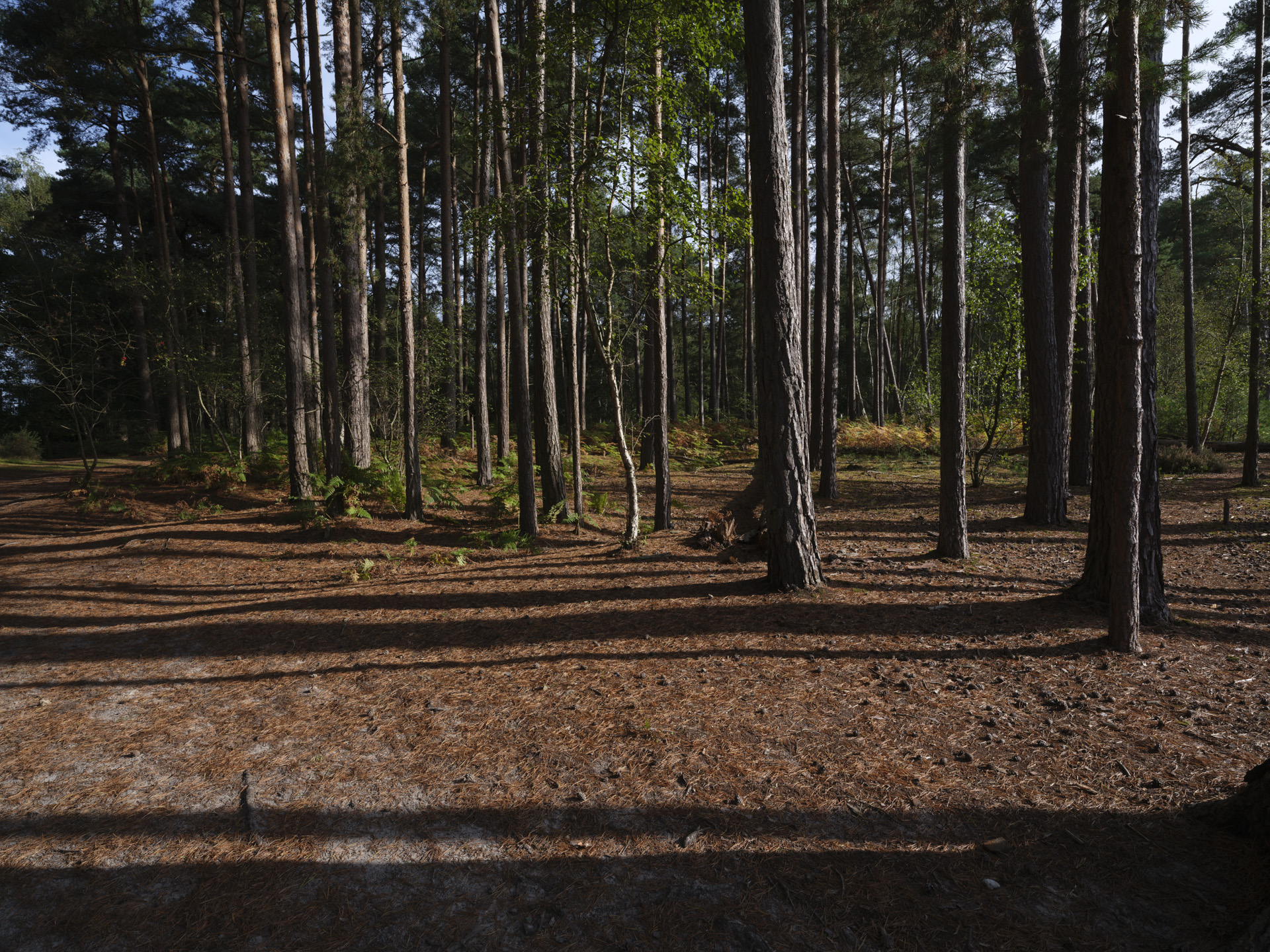
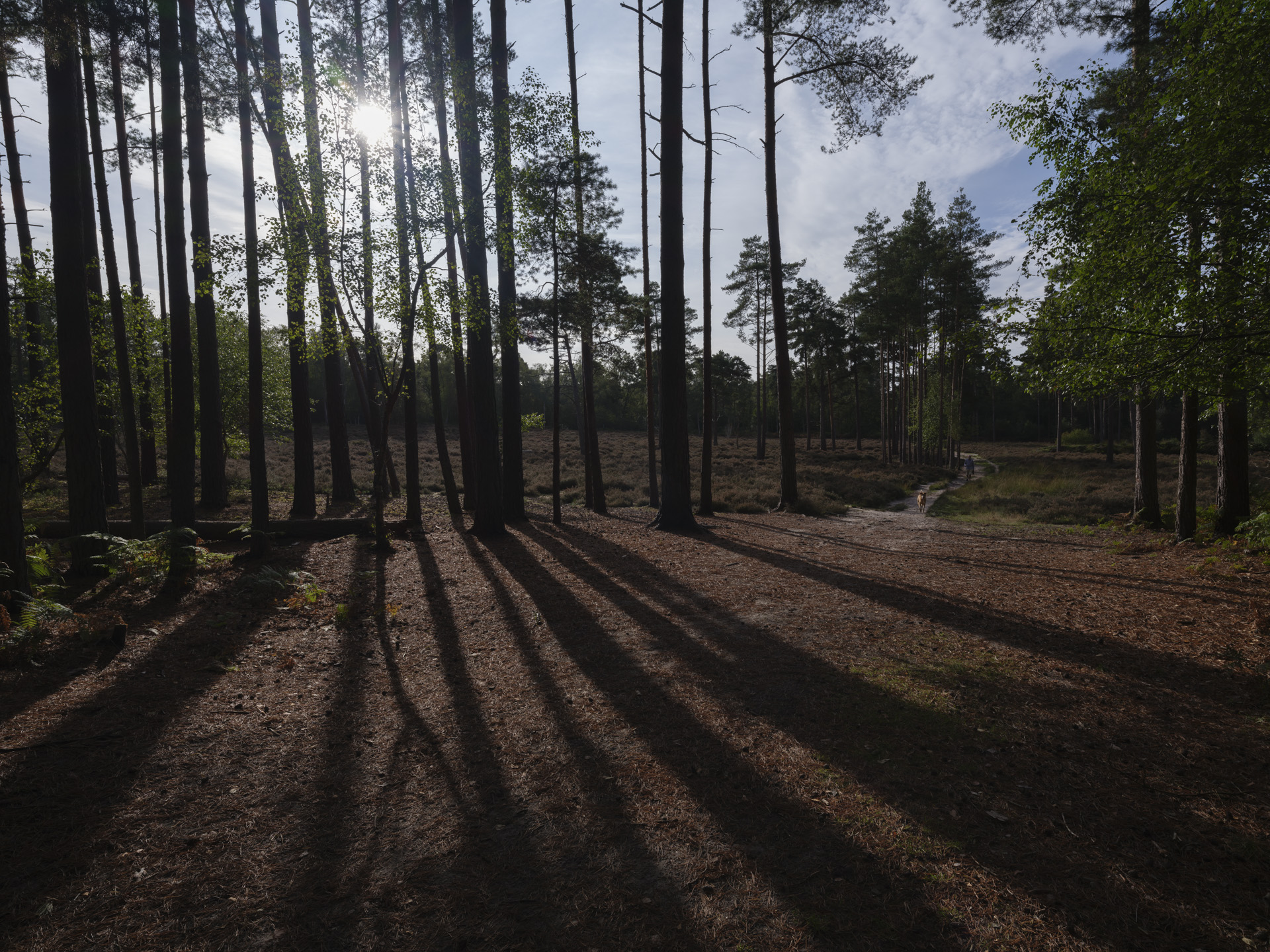
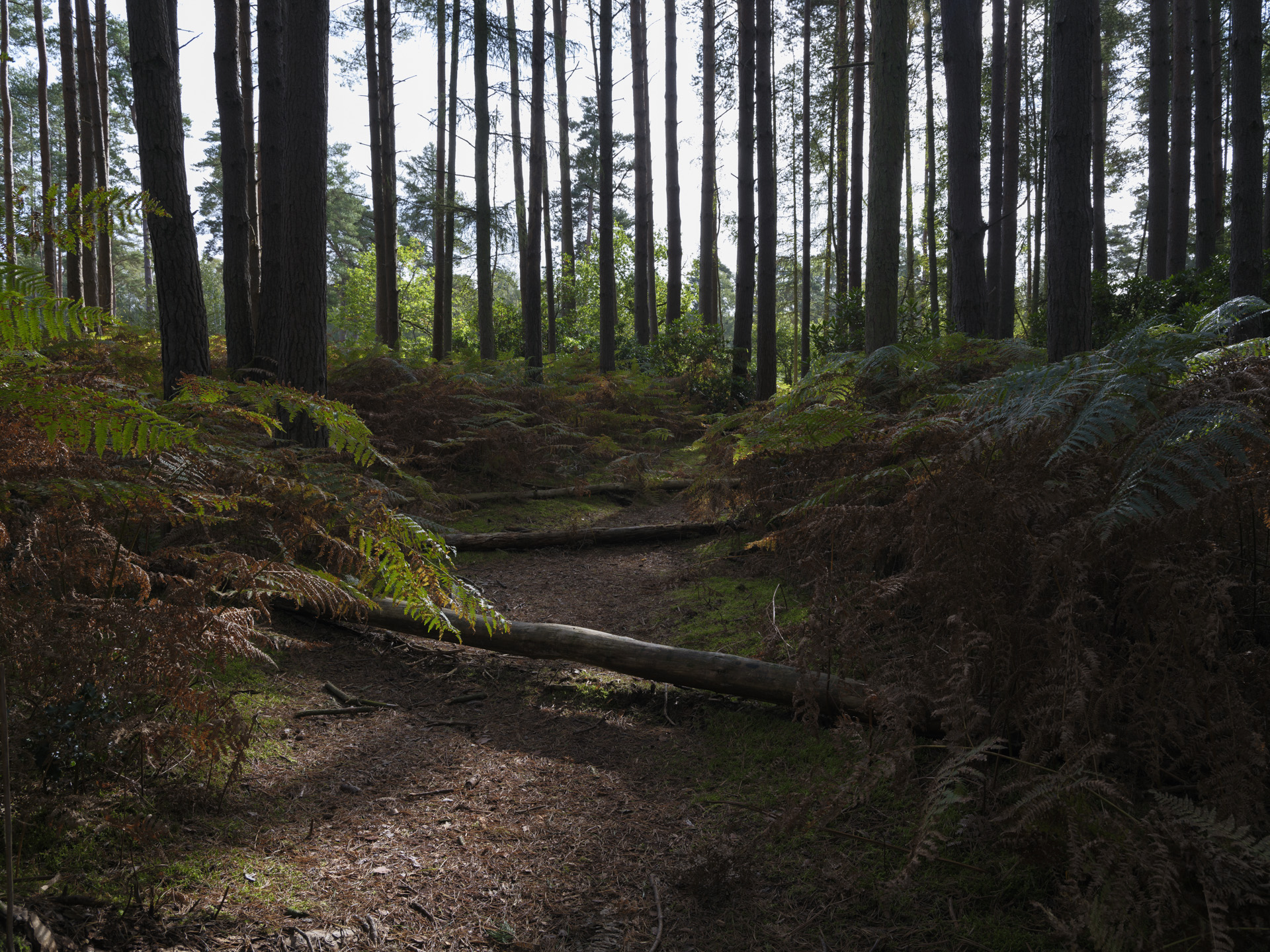
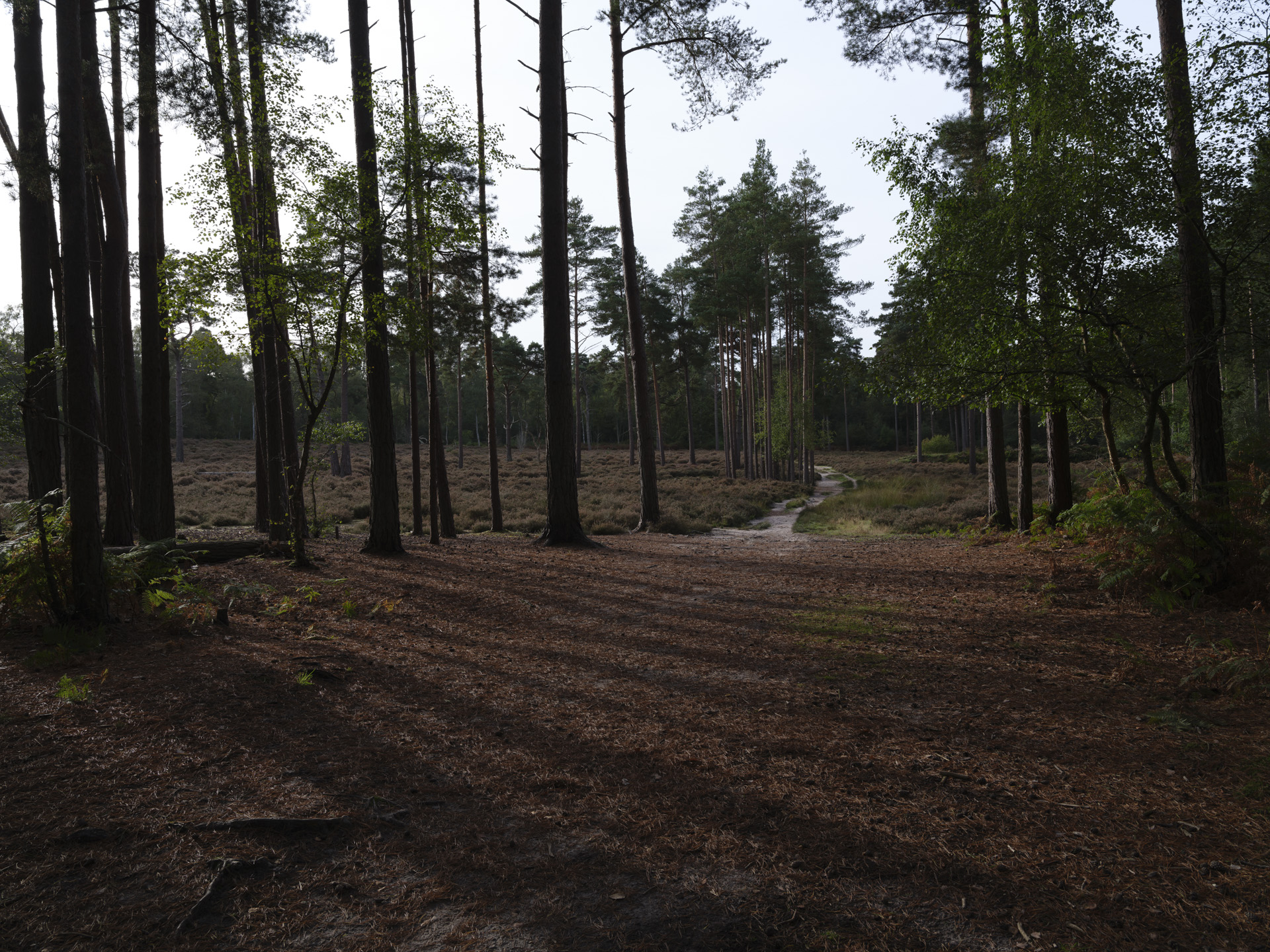
Video-wise, there’s really too much to sensibly cover in this review. Suffice it to say, the GFX100 II also has the very best video quality of any Fujifilm camera to date, holding its own against flagship models from Sony, Canon, Panasonic, and Nikon.
There’s 10-bit 8K 30p video (with 1.5x crop) and 4K 60p, plus 4K 120p slow motion, ‘open gate’ multi-aspect ratio recording (from the full width and full height of the sensor) and the F-Log2 color profile for the first time that provides the best dynamic range of any Fujifilm camera when shooting at the base ISO 800.
In addition to the native GF format, we can shoot in multiple cine formats, including Premista, Cooke 35mm and 35mm anamorphic (with de-squeezed monitoring). It’s all made possible because of the large GF-mount image circle. Tasty stuff.
Fujifilm says that an increased sensor readout speed suppresses rolling shutter, which means we can shoot video of high-speed subjects without rolling shutter distortion. It’s not a stacked sensor design, but the technical info regarding rolling shutter impresses.
The GFX100 II still has a photo-first design, but for video quality, Fujifilm has thrown everything into the video recording capability of its latest flagship.
- Image and video quality score: 5/5
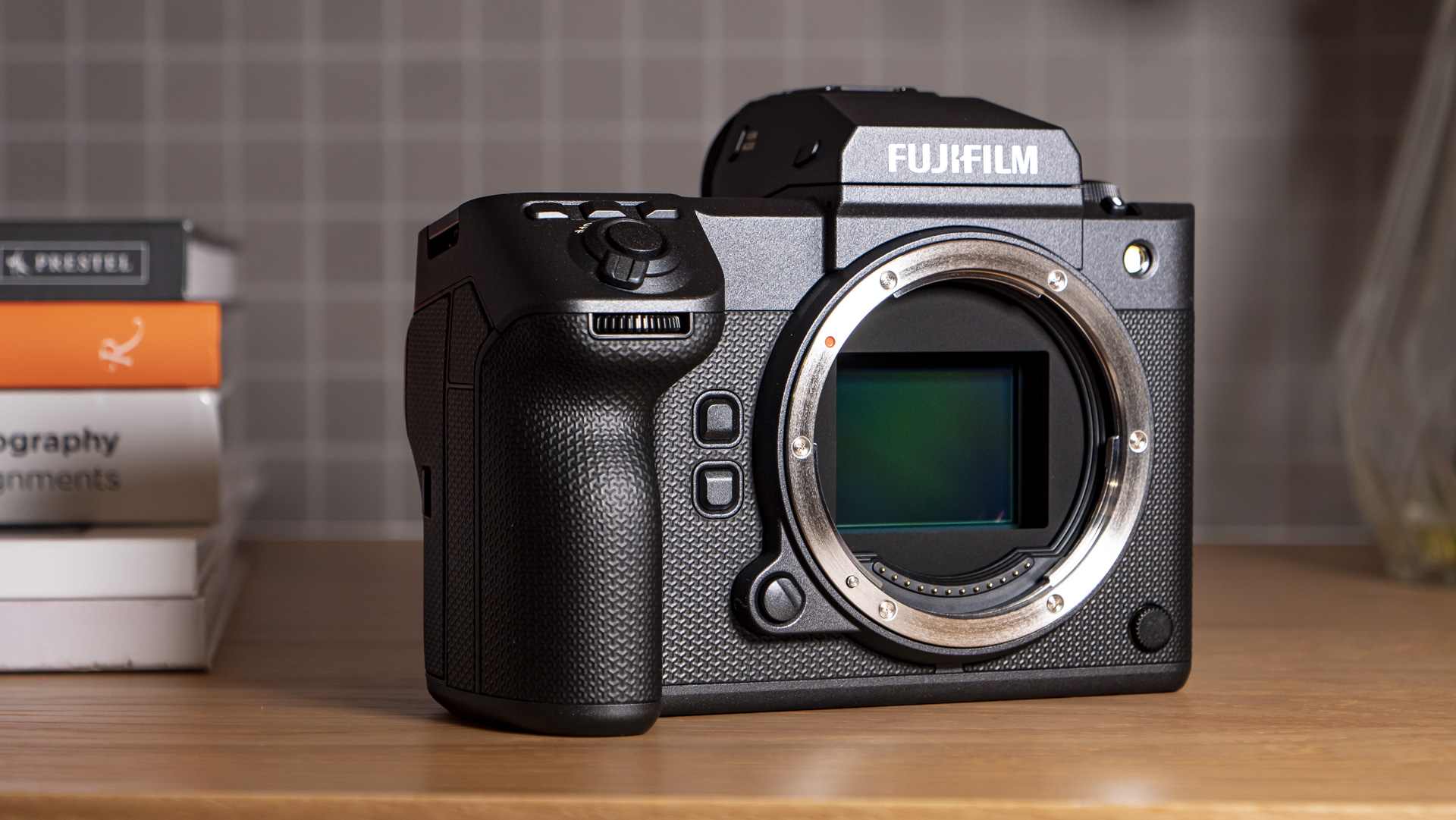
Fujifilm GFX100 II: Test scorecard
| Attributes | Notes | Rating |
|---|---|---|
| Price | Pricey, but just what we’d expect from a camera with this spec | 4 / 5 |
| Design | Modern, modular, sizeable, capable | 4.5 / 5 |
| Feature and performance | The fastest and most feature-packed medium-format camera ever | 5 / 5 |
| Image quality | Setting the benchmark for image quality in any consumer camera | 5 / 5 |
Should I buy the Fujifilm GFX100 II?
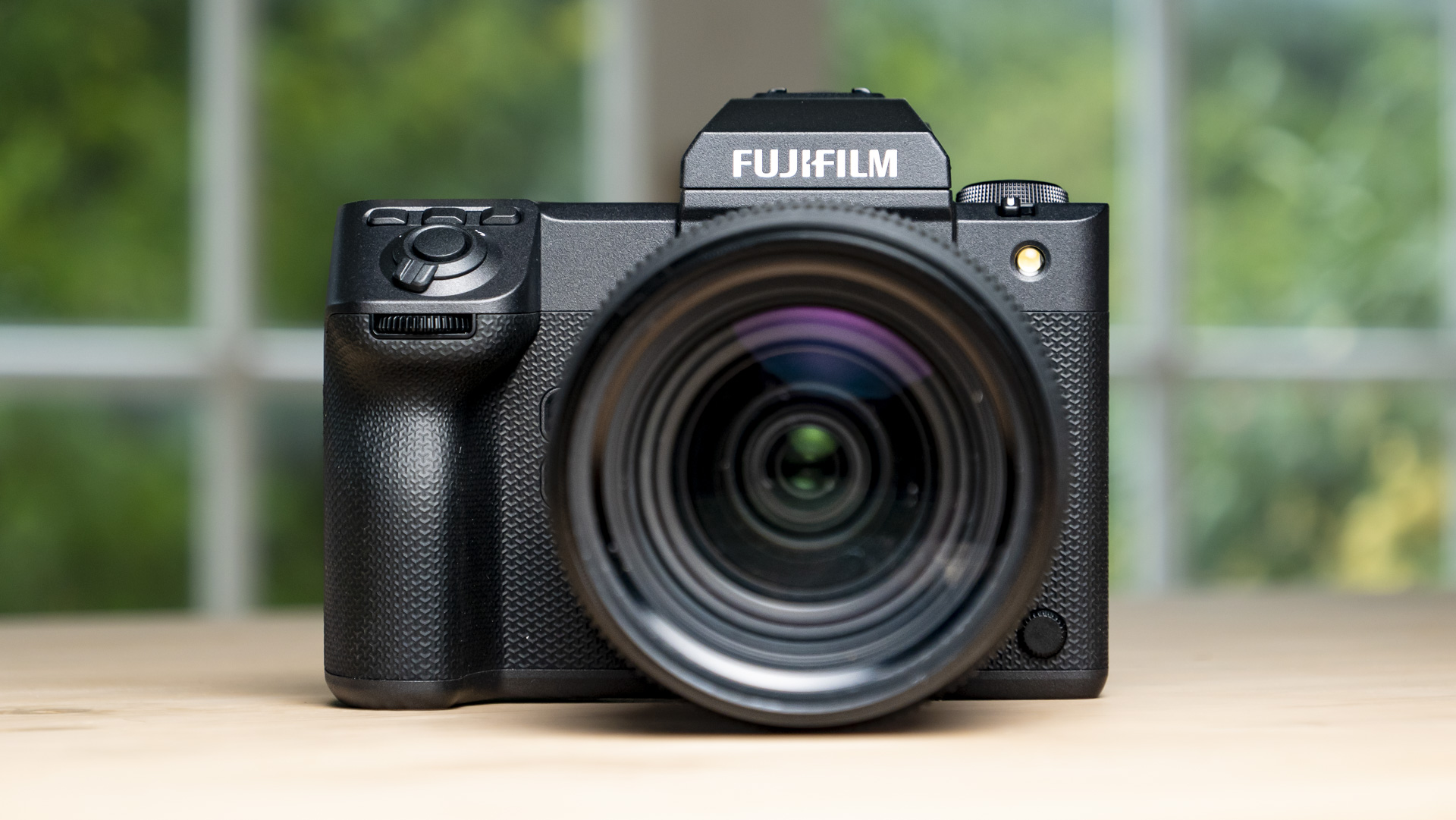
Buy it if...
You want the most powerful 100MP camera around
The 102MP medium-format sensor sets the benchmark for photo image quality, and now that quality is backed up with the raw power of Fujifilm’s best processor and autofocus.
You’re a professional hybrid shooter
If you mix up photography and video a lot, then the GFX100 II is quite possibly the most capable tool on the market now.
You want a modular medium-format
The GFX100 II has the smaller form factor of the GFX100S but unlike that camera, it is compatible with a vertical grip to bulk out and improve battery life, while its removable EVF works with the tilt accessory.
Don't buy it if...
You love Fujifilm retro looks
The GFX100 II has different design cues to the retro feel of the likes of the X-T5 and X100V. I grew to love its brutalistic looks and almost wished it to be more ‘out there’ in the end – this is no blast from the past, but a glimpse of the future.
You don’t need the detail
You don’t have to shoot 102MP photos and 8K video with the GFX100 II; its smaller file sizes and lower resolution video are excellent alternatives. But if you really don’t need all of that detail in the first place, why spend so much money when a camera like the A7R V costs around half the price?
You’re primarily a filmmaker
The GFX100 II has a practically unbeatable video spec; 8K video, multi-aspect ratio including anamorphic, plus video monitoring tools. However, it’s still a photo-centric design with photography-first GF lenses, plus it lacks the professional video basics like an XLR input.
Fujifilm GFX100 II: Also consider

If our Fujifilm GFX100 II review has inspired you to think about other options, here are two more cameras to consider…
Sony A7R V
The A7R V and GFX100 II share many similarities; offering the best image quality in each respective sensor format, highest-resolution viewfinder, and intelligent autofocus. In fact, the 61MP sensor found in the Sony A7R V has the same pixel size as the 102MP medium-format sensor. The A7R V boasts the best autofocus of any camera and is half the price, but the GFX100 II has 40MP more and better video specs.
Read our full Sony A7R V review
Hasselblad X2D 100C
The GFX100 II betters the X2D 100C in almost every regard; it’s faster and more powerful, plus its autofocus wipes the floor with its Swedish competition. However, if you don’t shoot video at all, and you like simplistic Scandi design and smaller form factor, then the X2D 100C comes out on top.
Read our full Hasselblad X2D 100C review
How I tested the Fujifilm GFX100 II
- First-look at the Fujifilm X-summit
- Two weeks of in-depth testing
I’ve had a sneak peek, a 3-day hands-on, plus a 2-week loan period with the GFX100 II, in good weather and bad, in Sweden and the UK, testing the photo and video capabilities of what is one of the most powerful cameras ever.
I’ve taken the flagship medium-format on city and countryside walks in strong light and low light, done studio portrait shoots, and pushed its subject detection autofocus, in-body image stabilization and continuous burst shooting to the limit to see what it’s really capable of.
First reviewed September and October 2023

Tim is the Cameras editor at TechRadar. He has enjoyed more than 15 years in the photo video industry with most of those in the world of tech journalism. During his time as Deputy Technical Editor with Amateur Photographer, as a freelancer and consequently editor at Tech Radar, Tim has developed a deeply technical knowledge and practical experience with cameras, educating others through news, reviews and features. He’s also worked in video production for Studio 44 with clients including Canon, and volunteers his spare time to consult a non-profit, diverse stories team based in Nairobi. Tim is curious, a keen creative, avid footballer and runner, and moderate flat white drinker who has lived in Kenya and believes we have much to enjoy and learn from each other.
